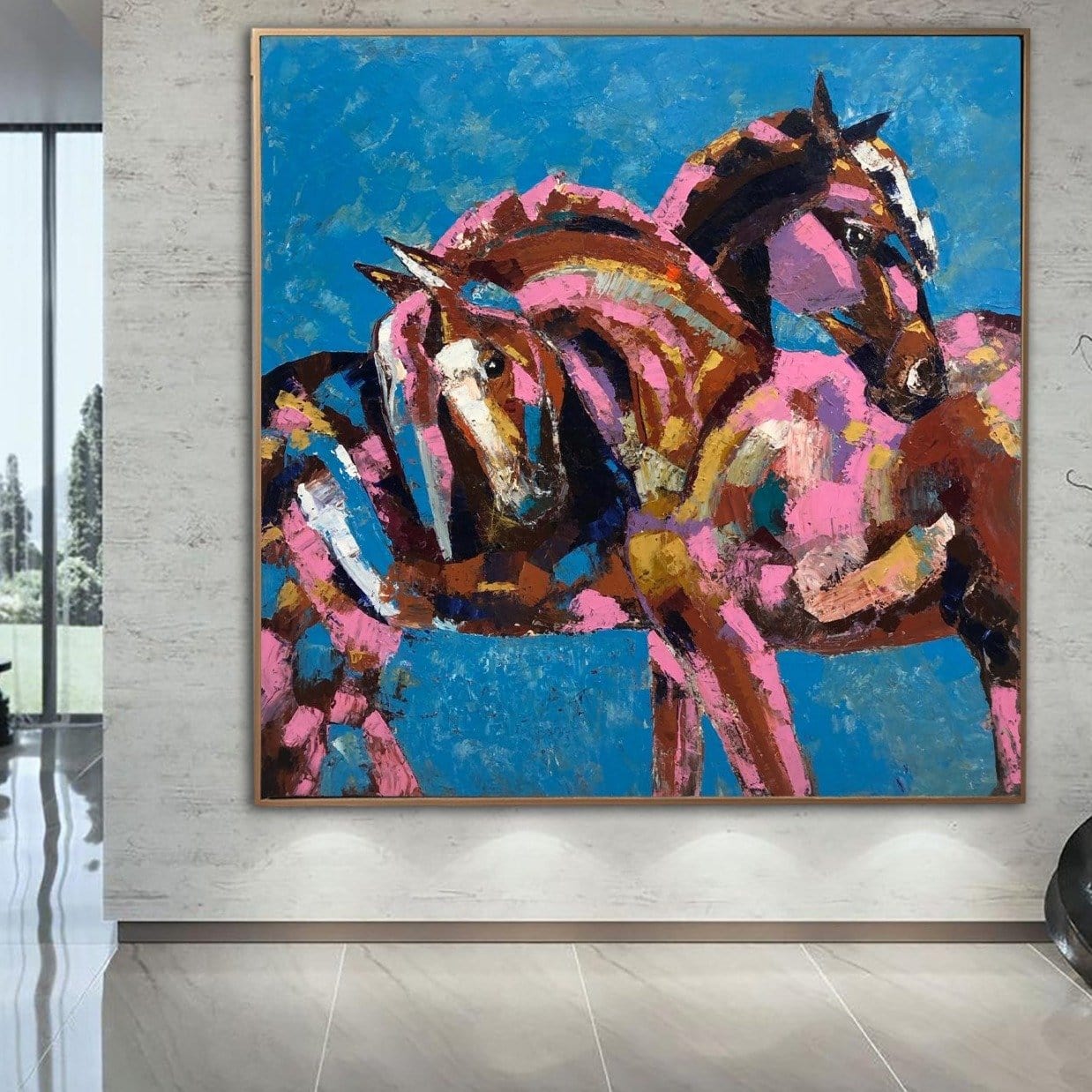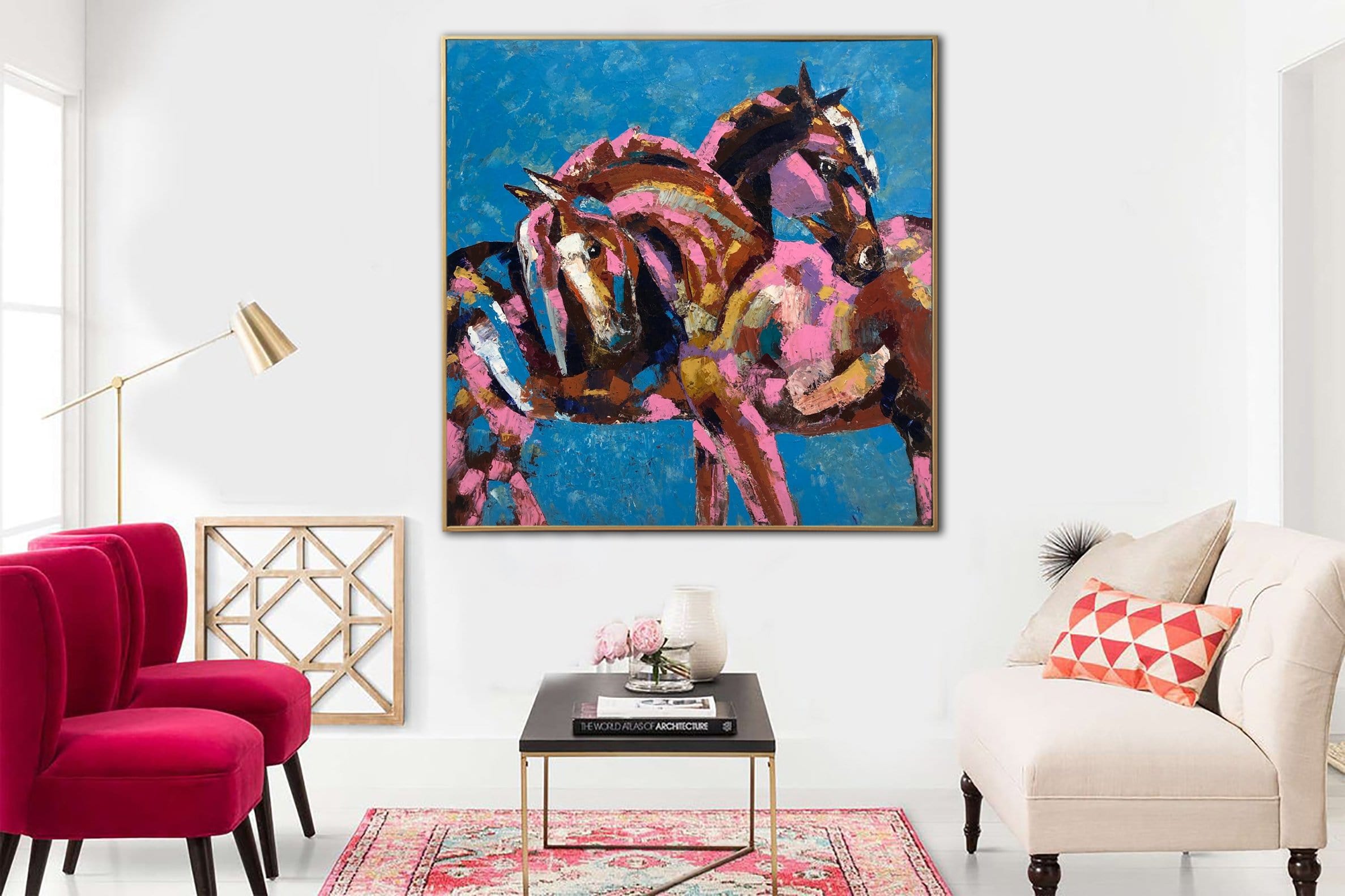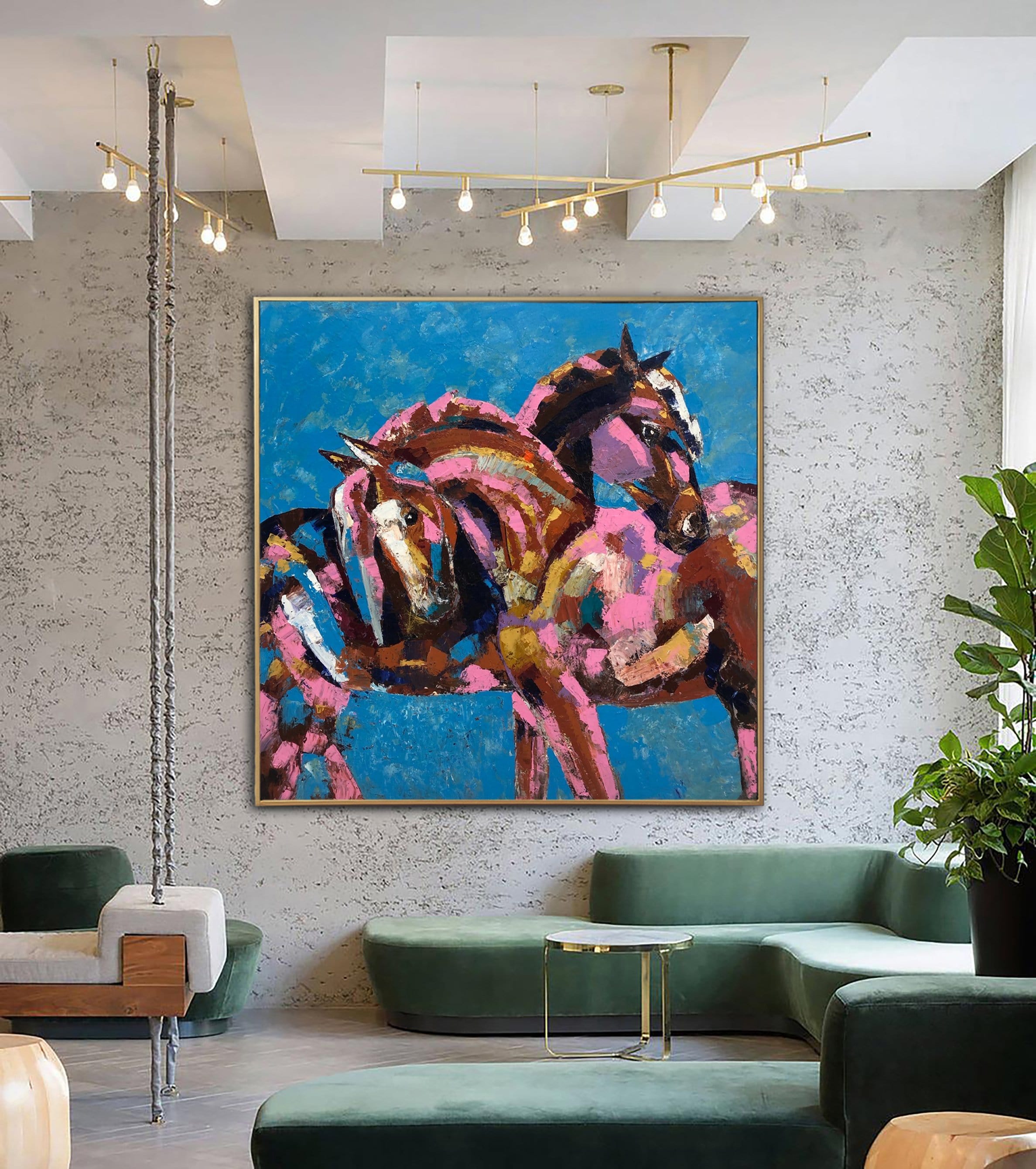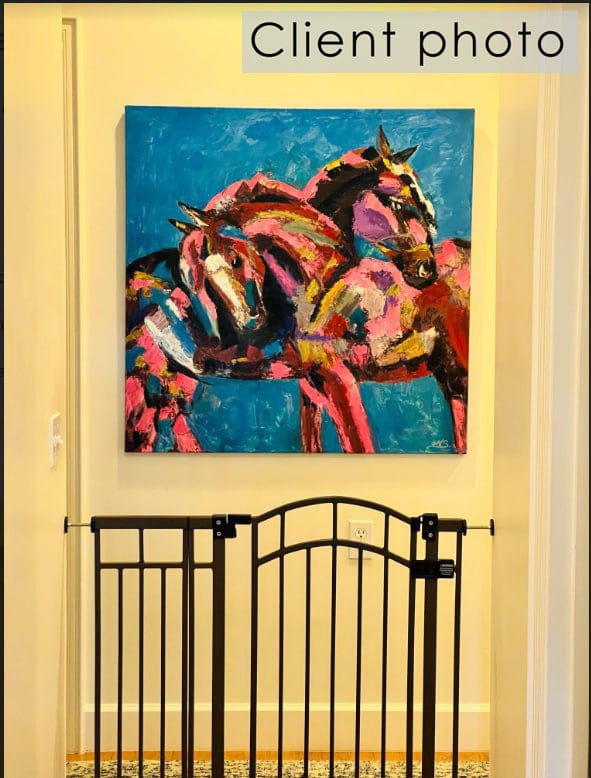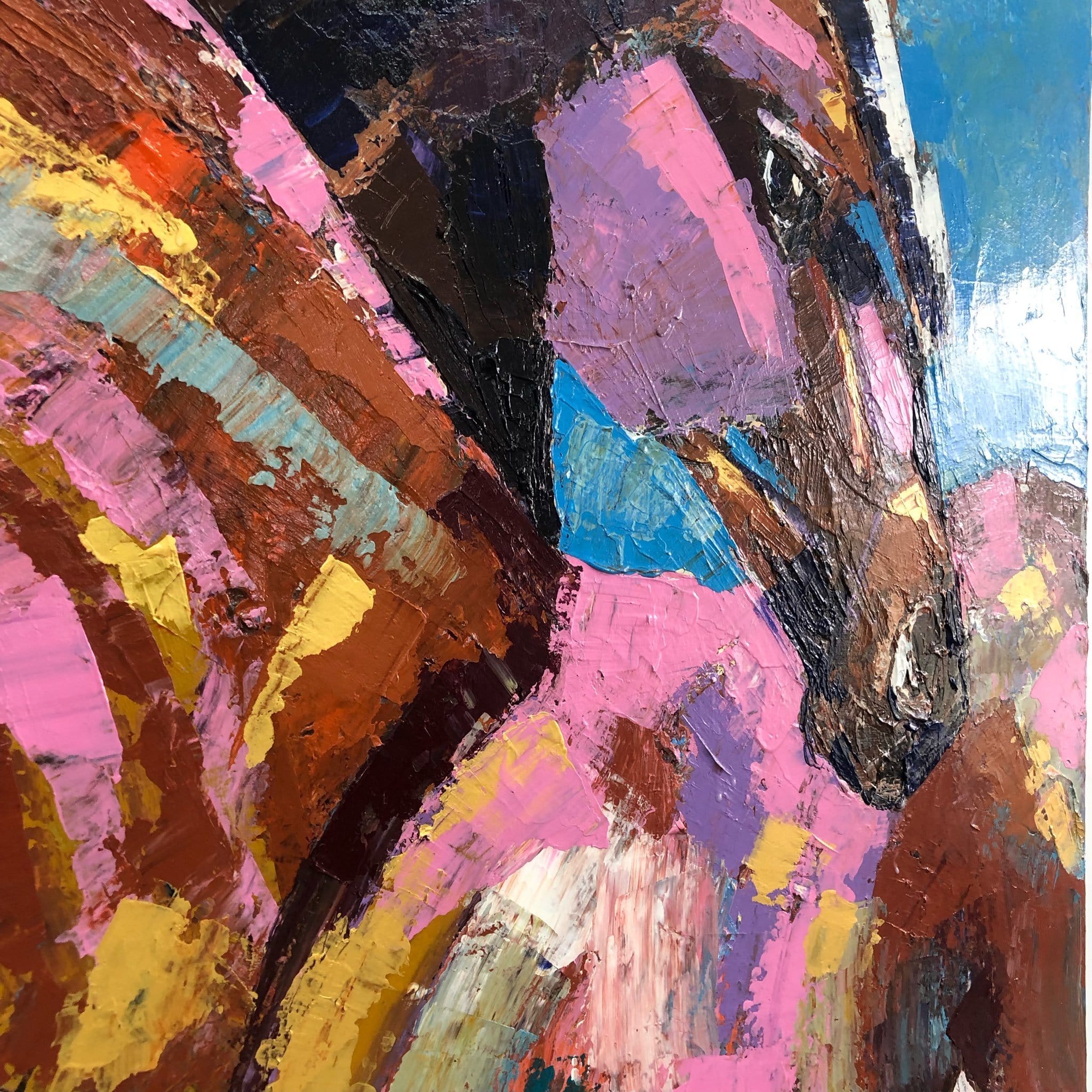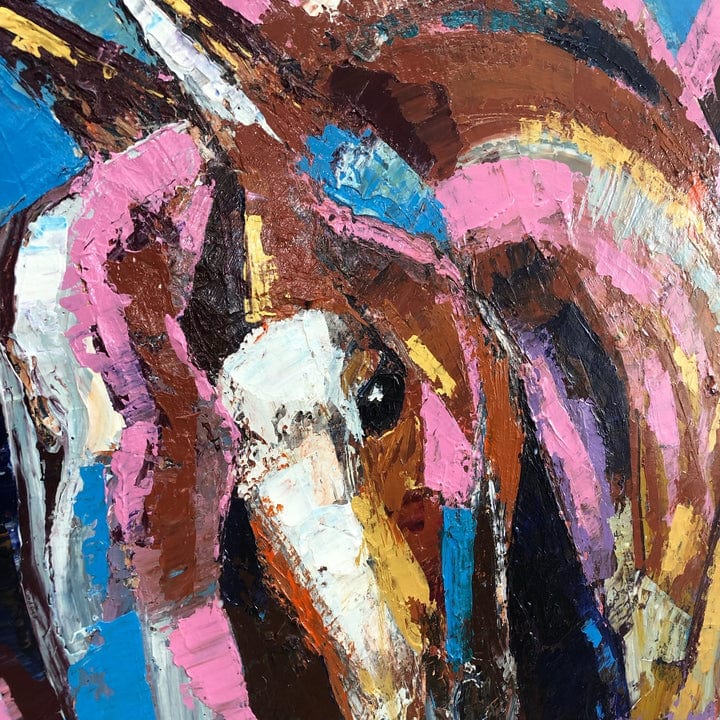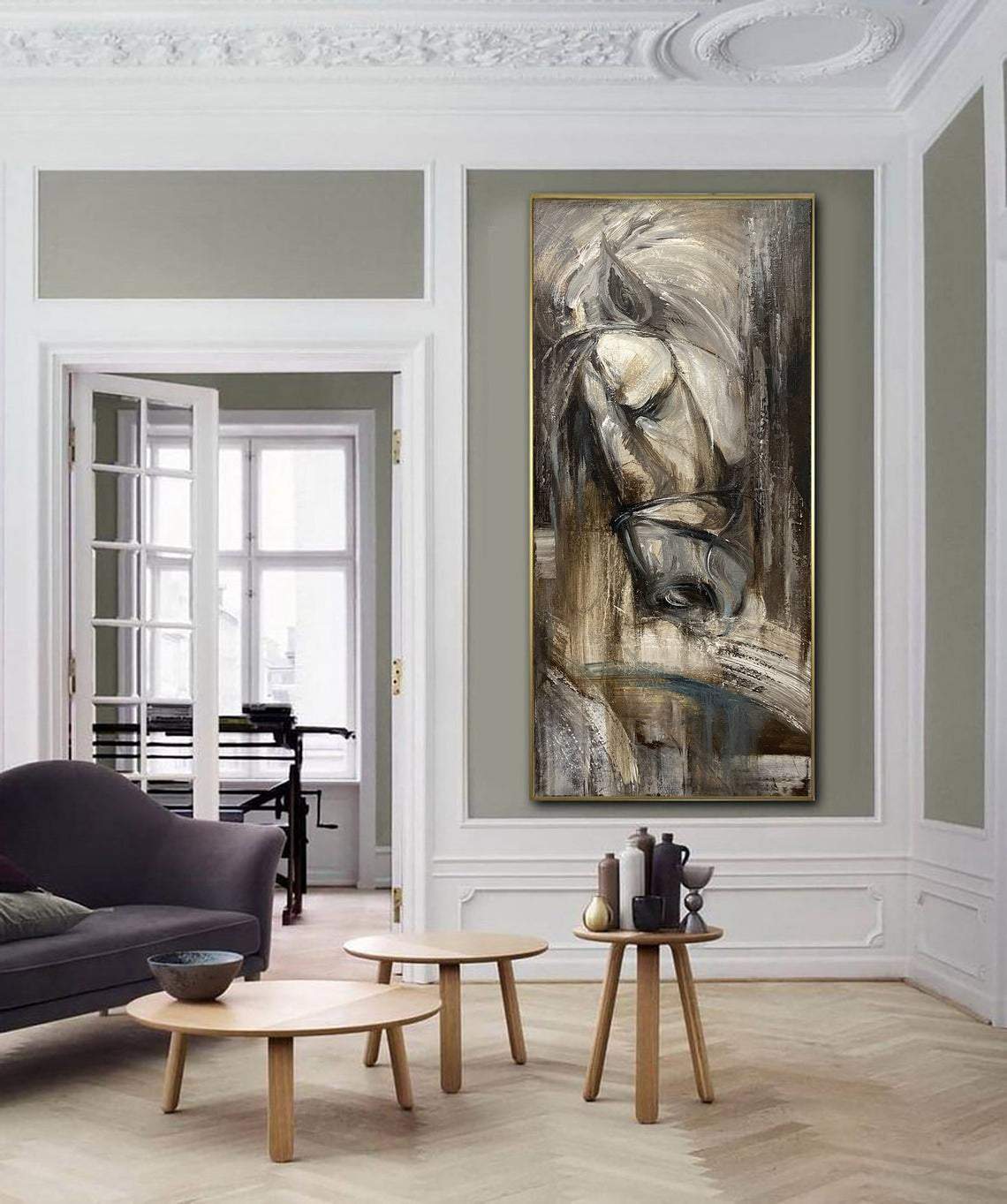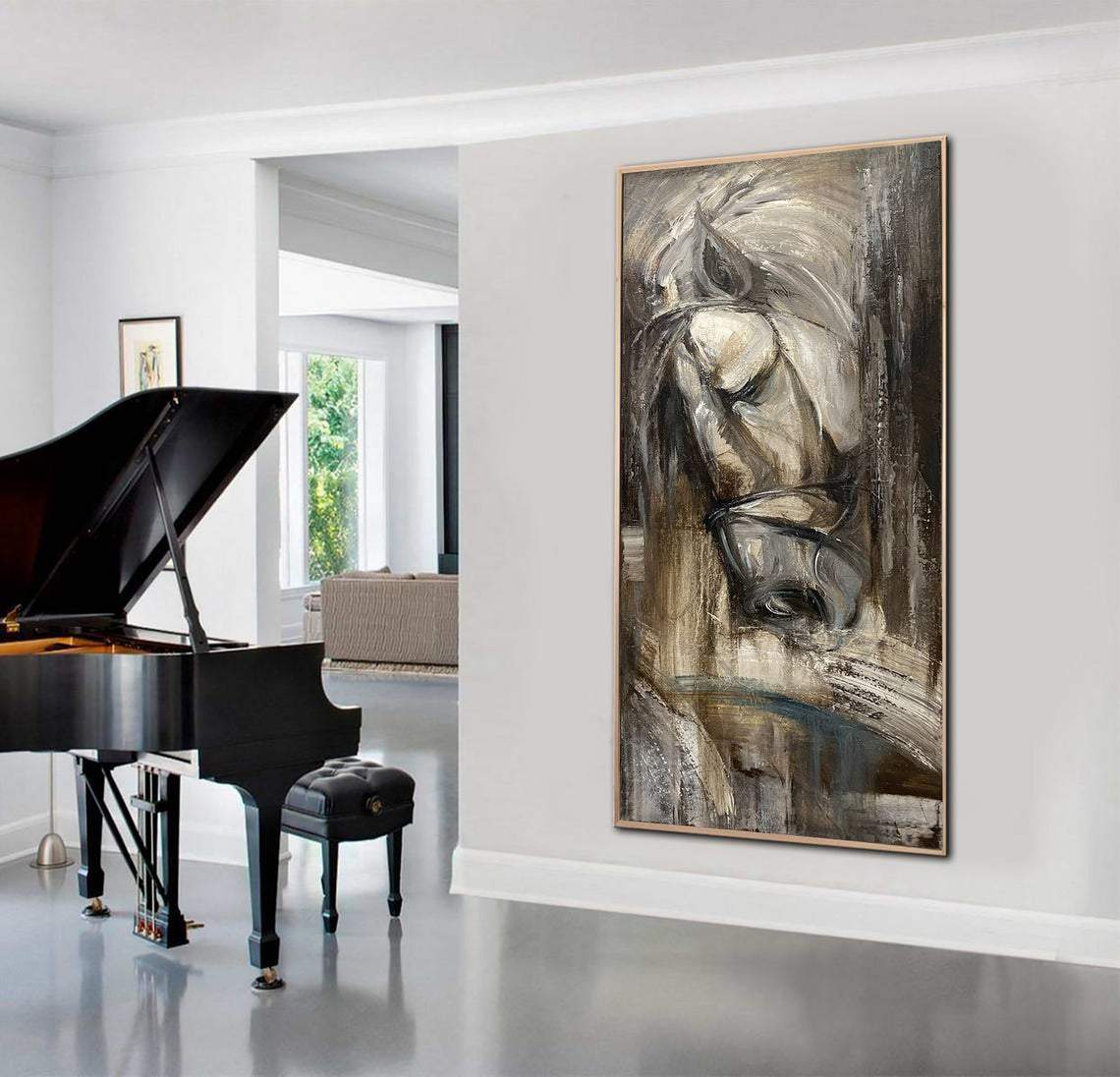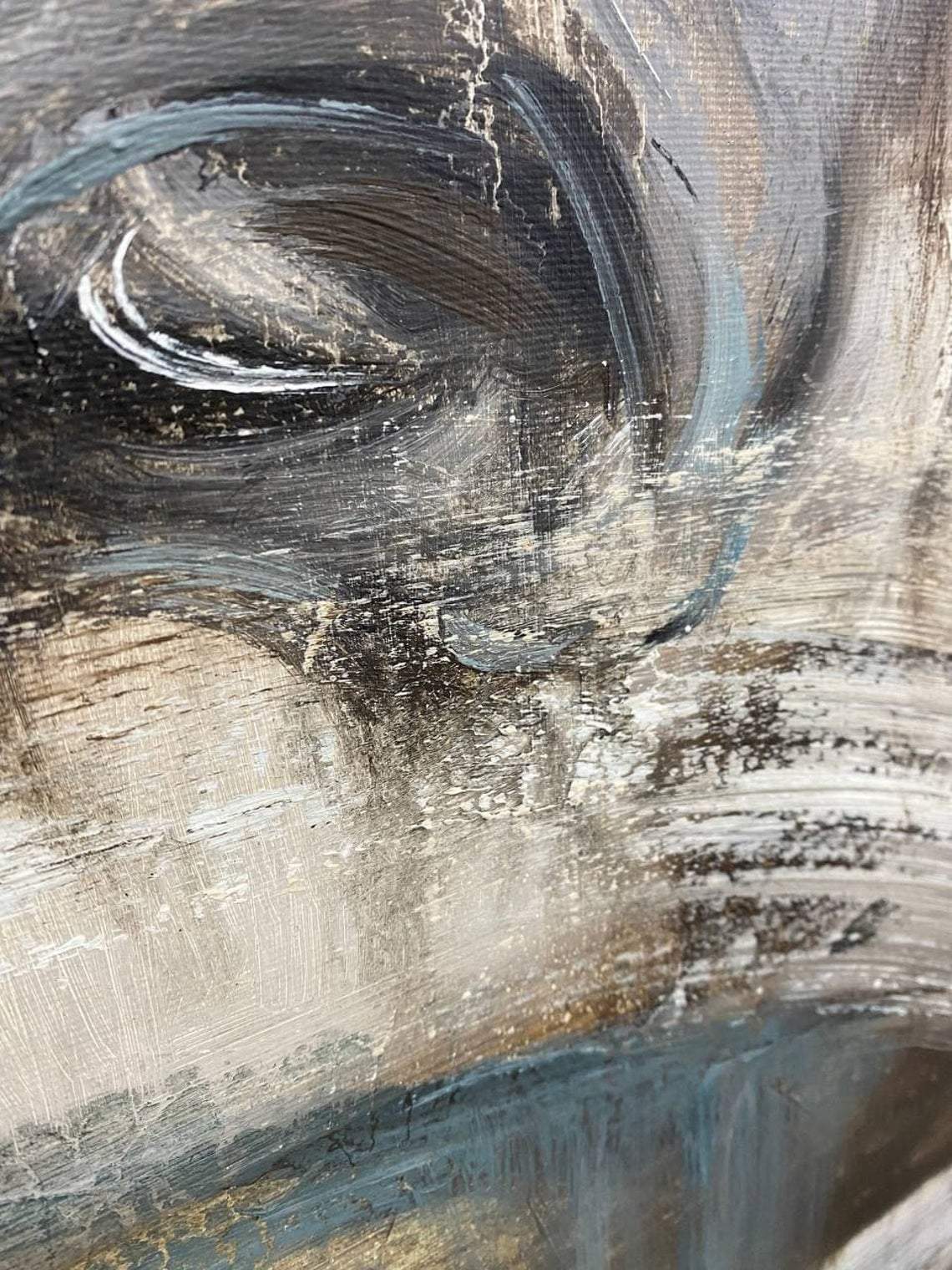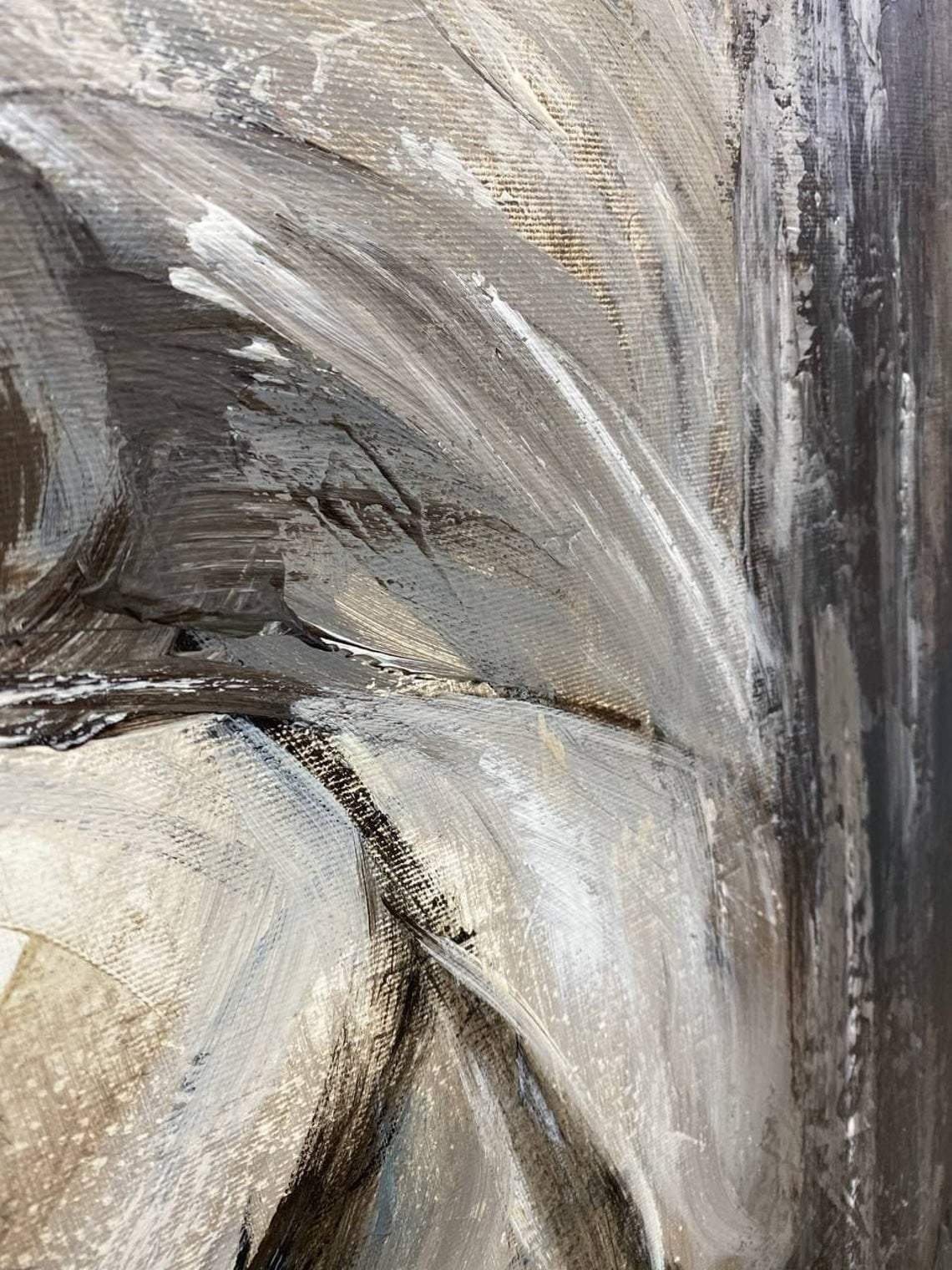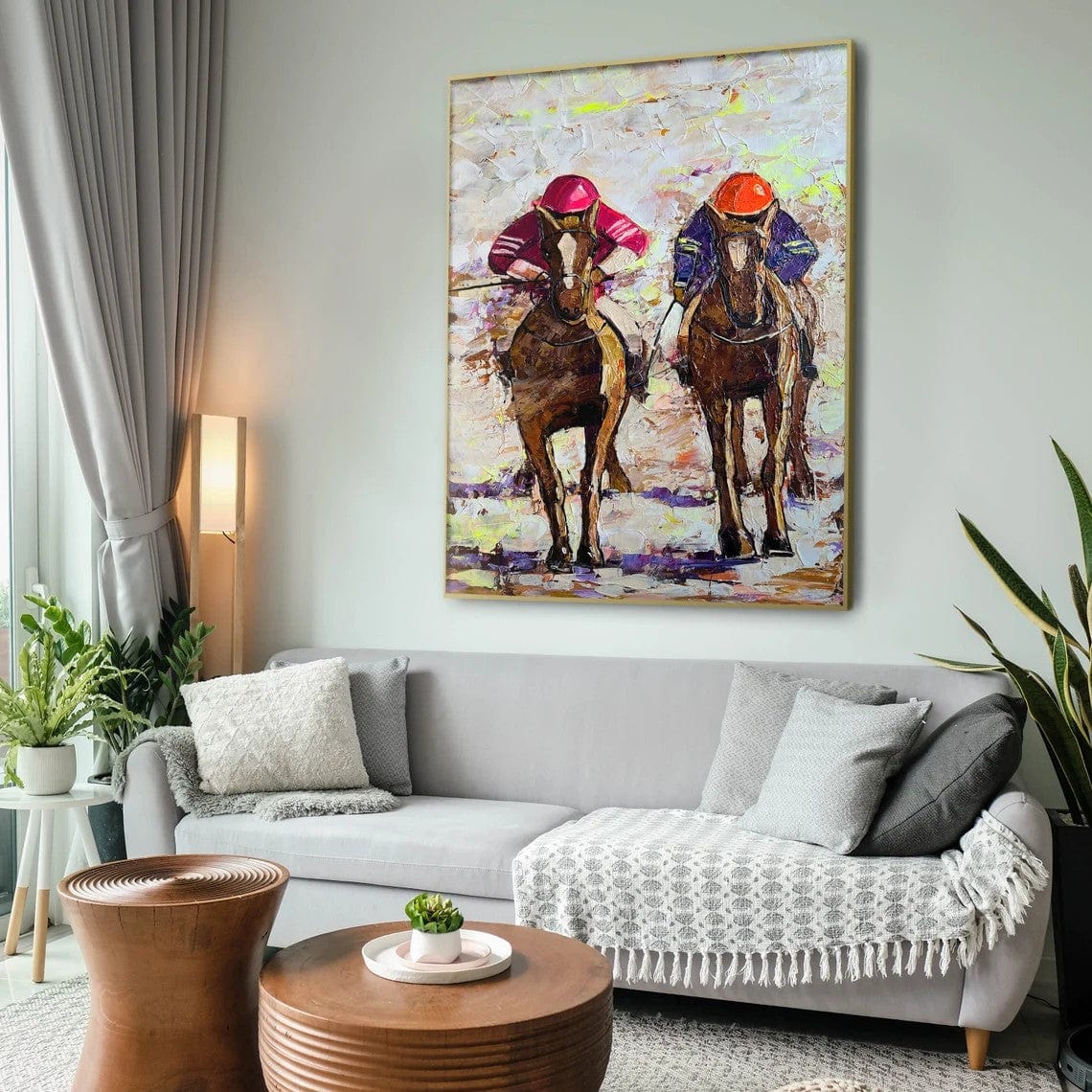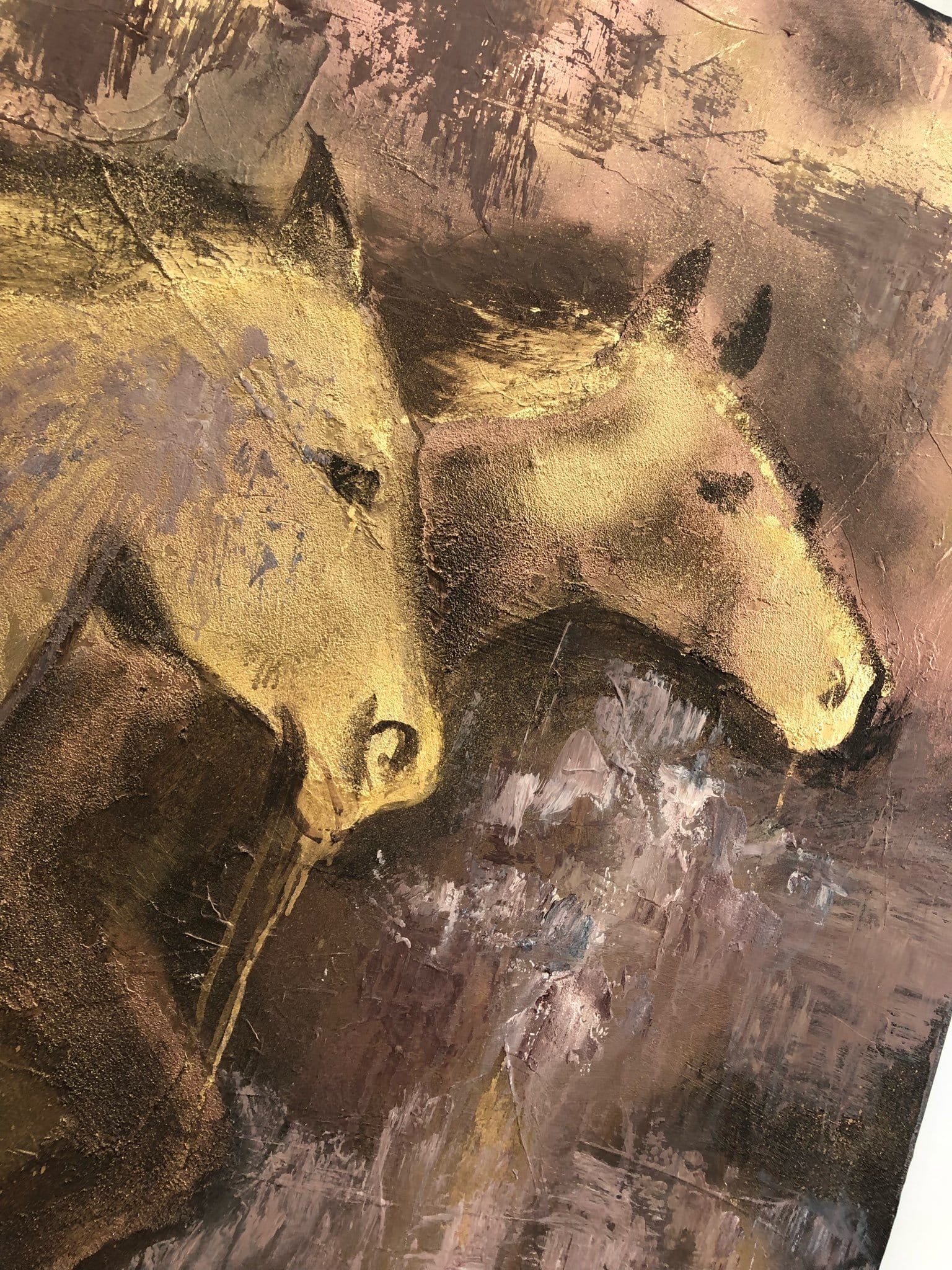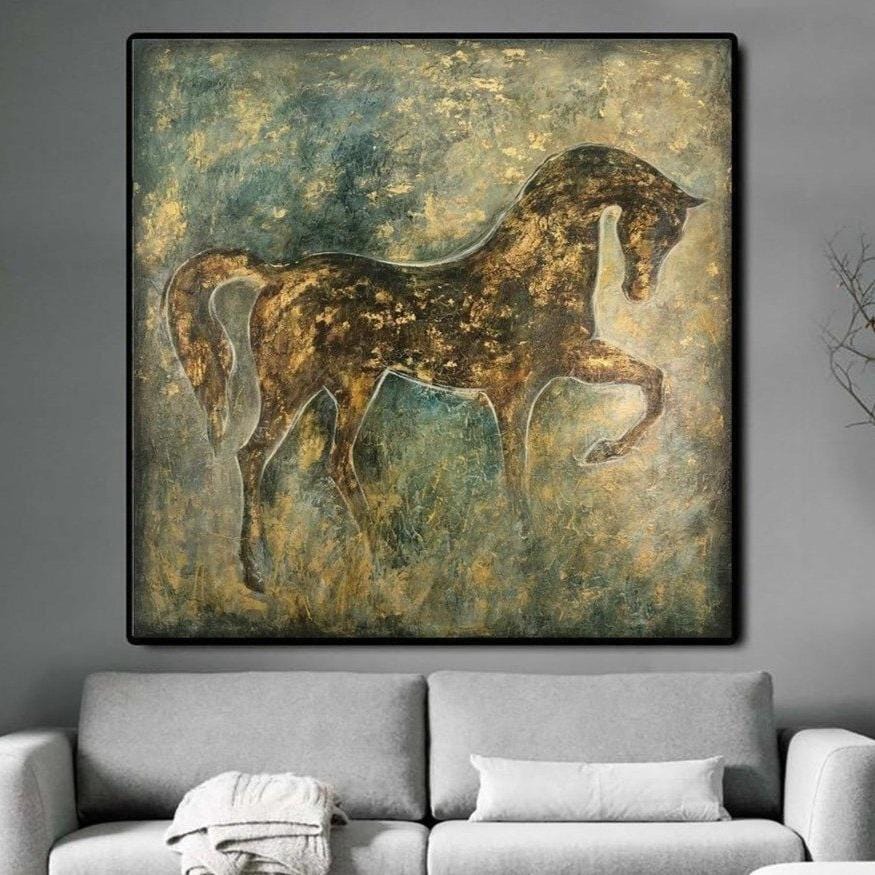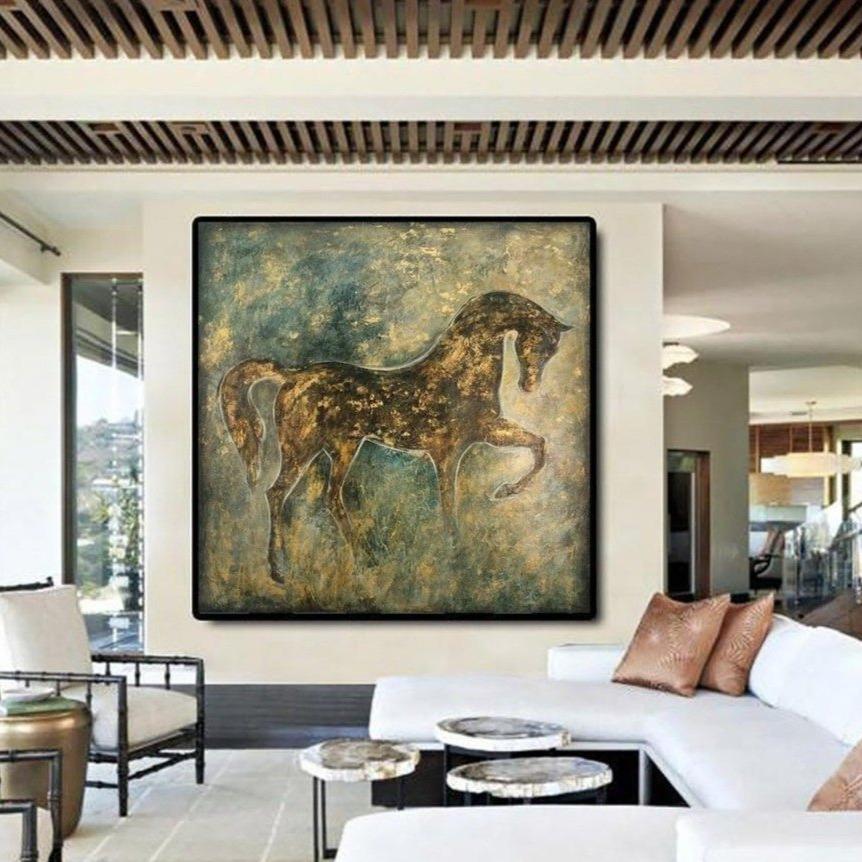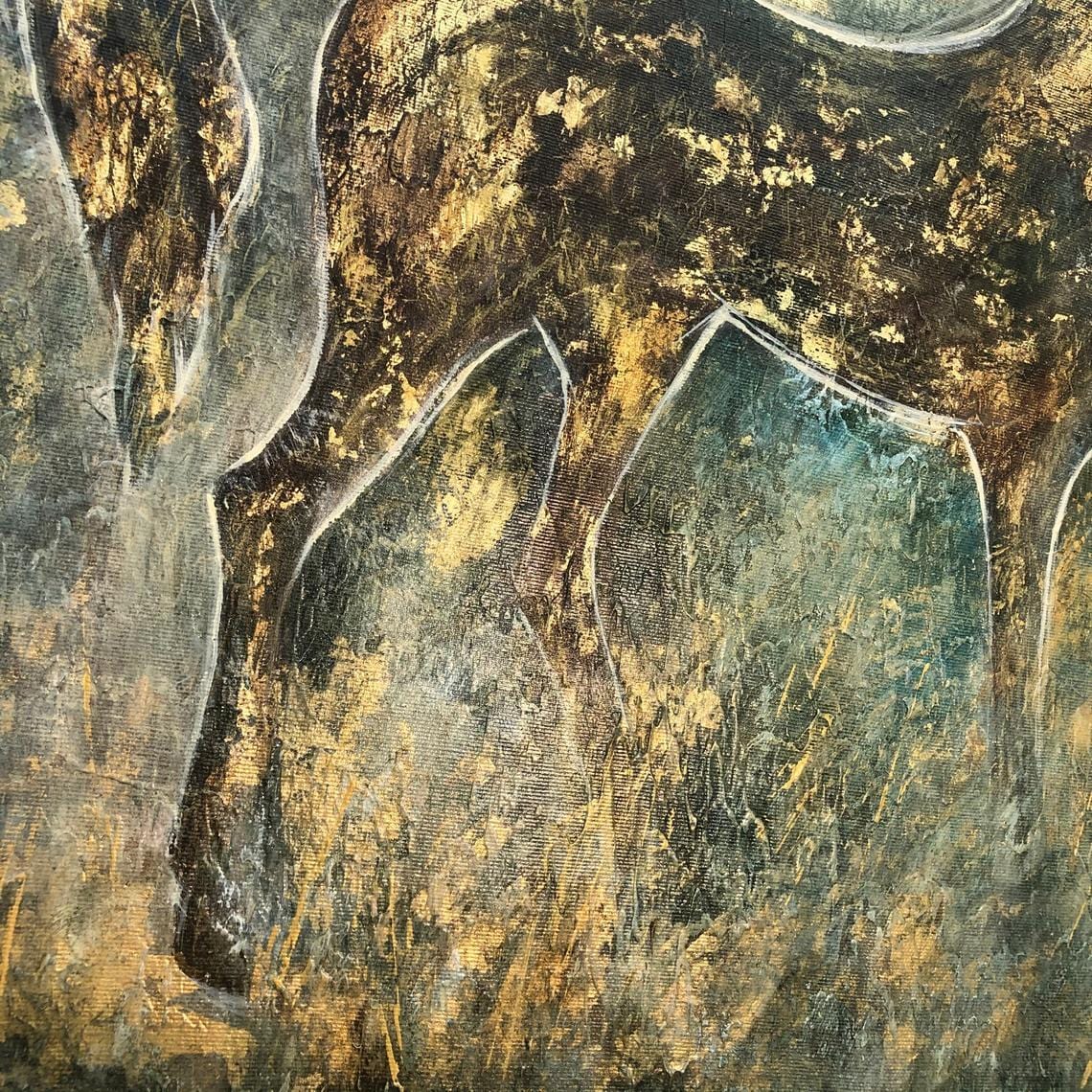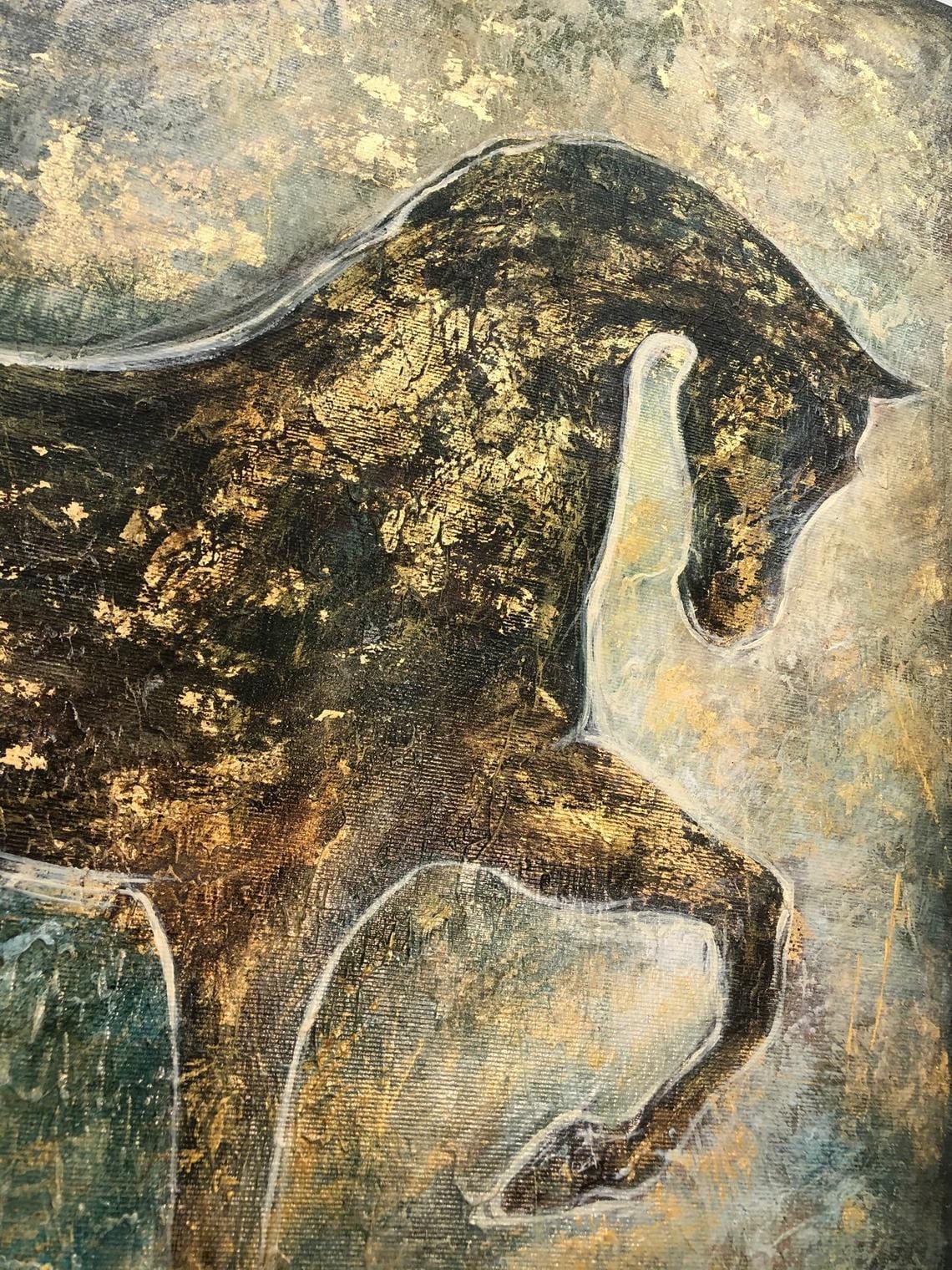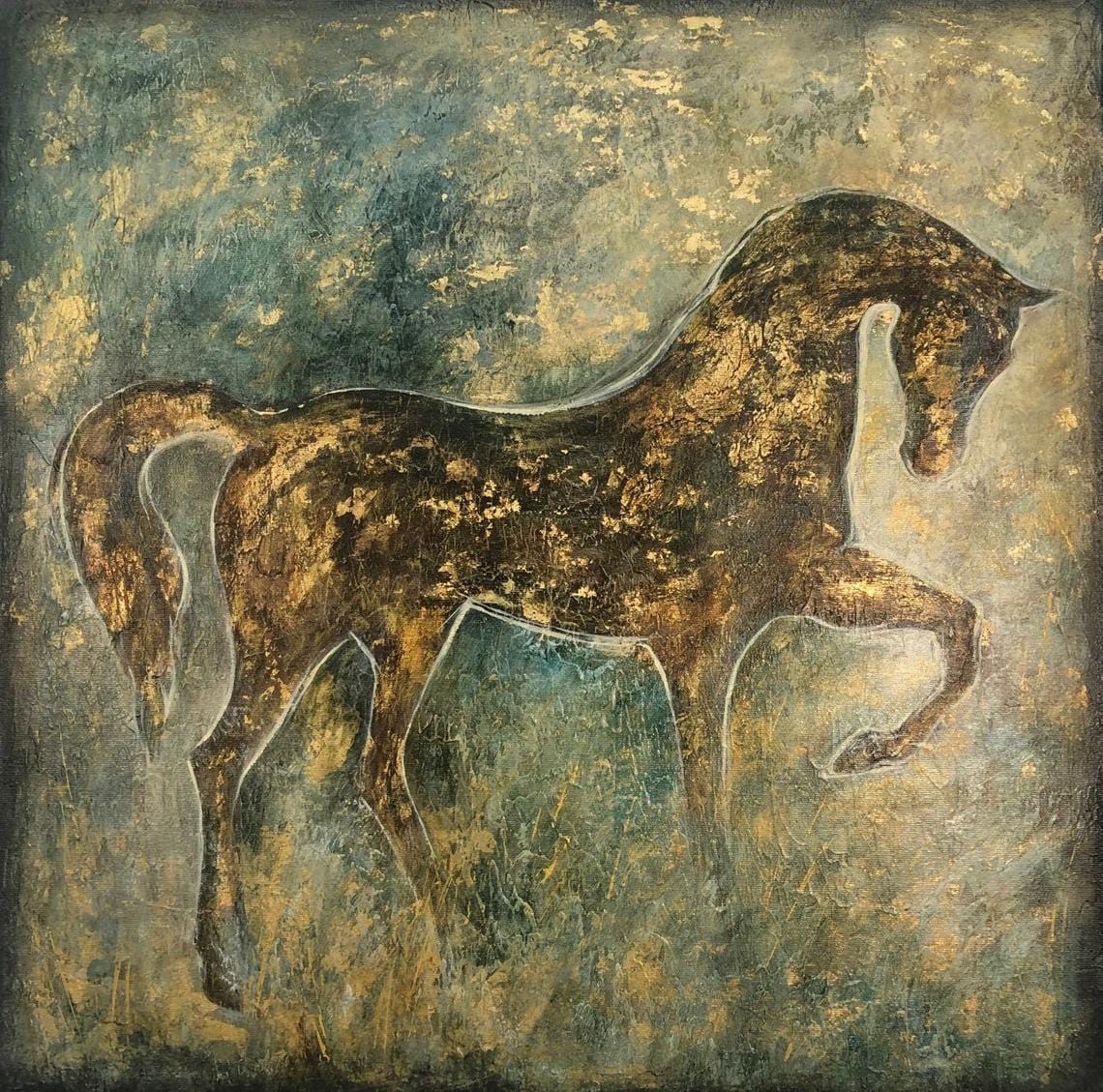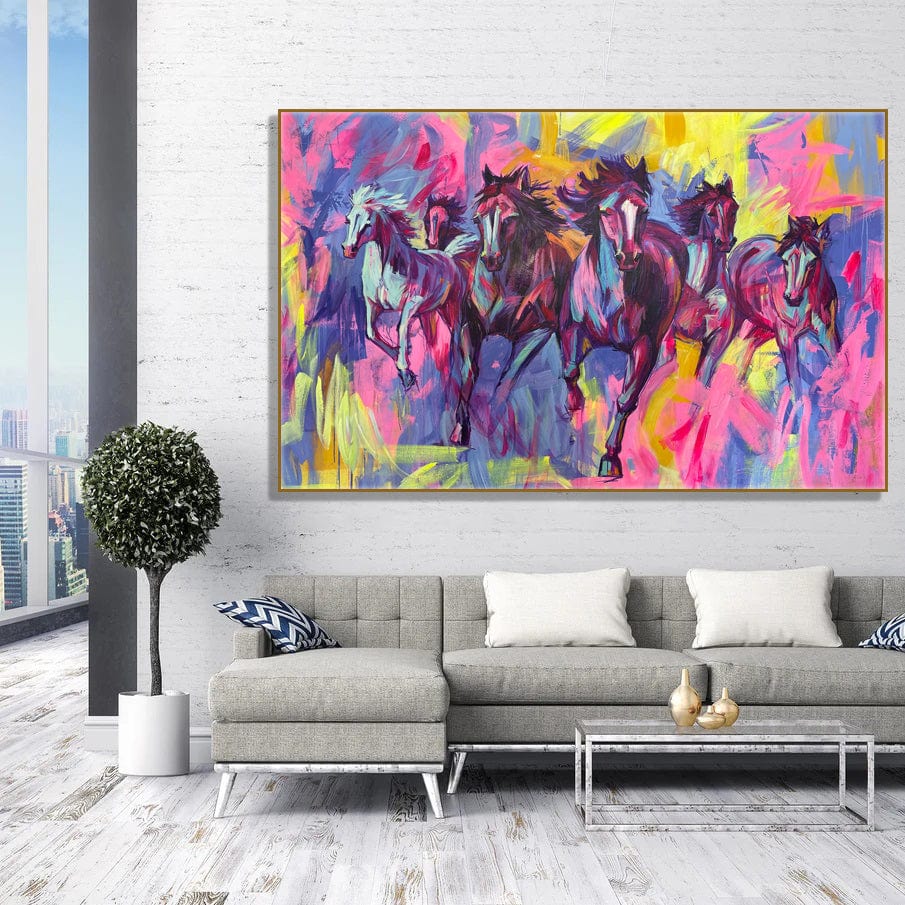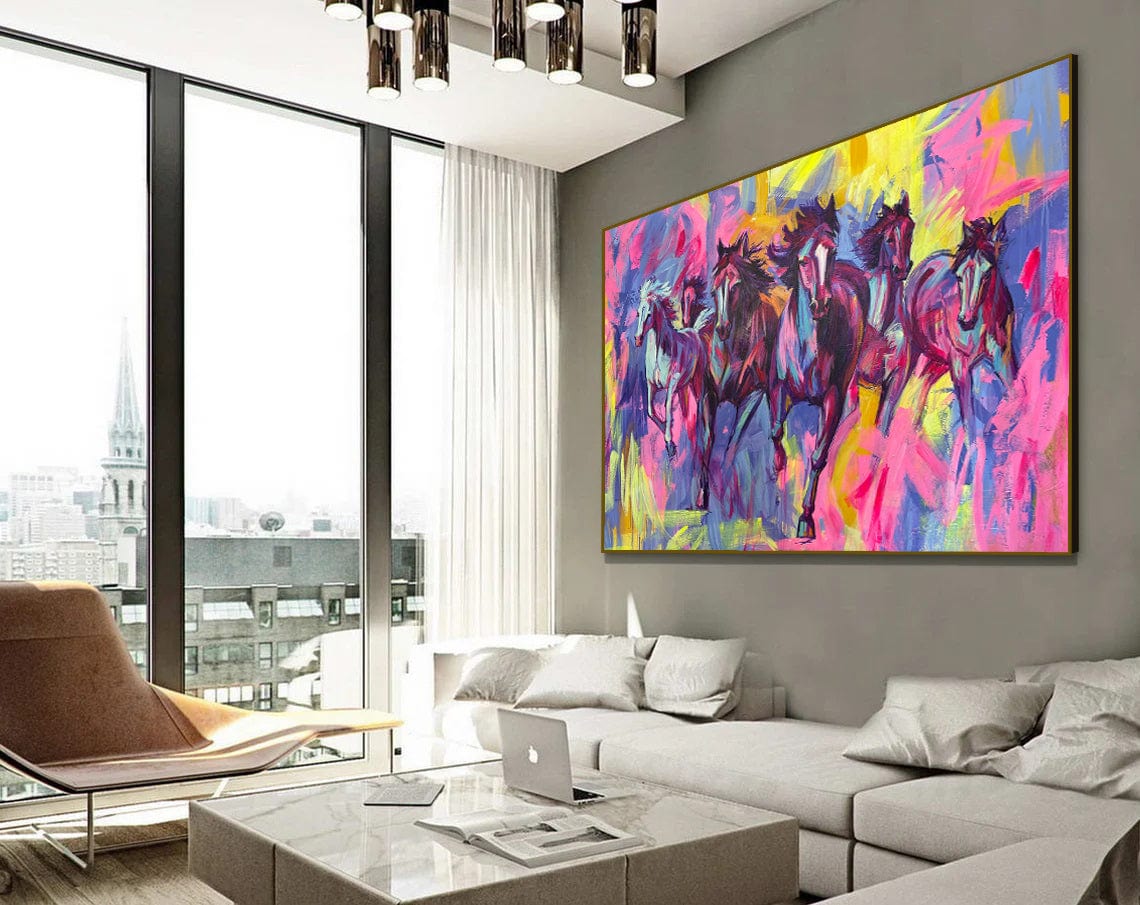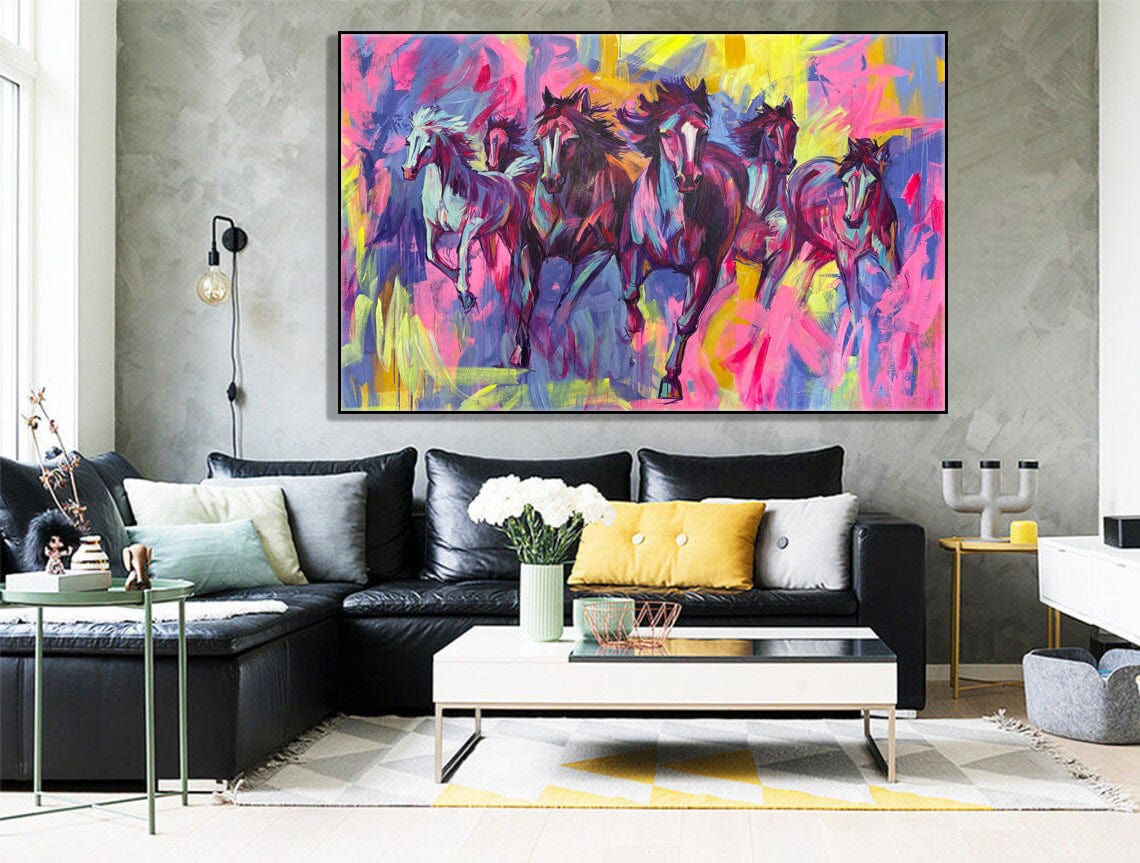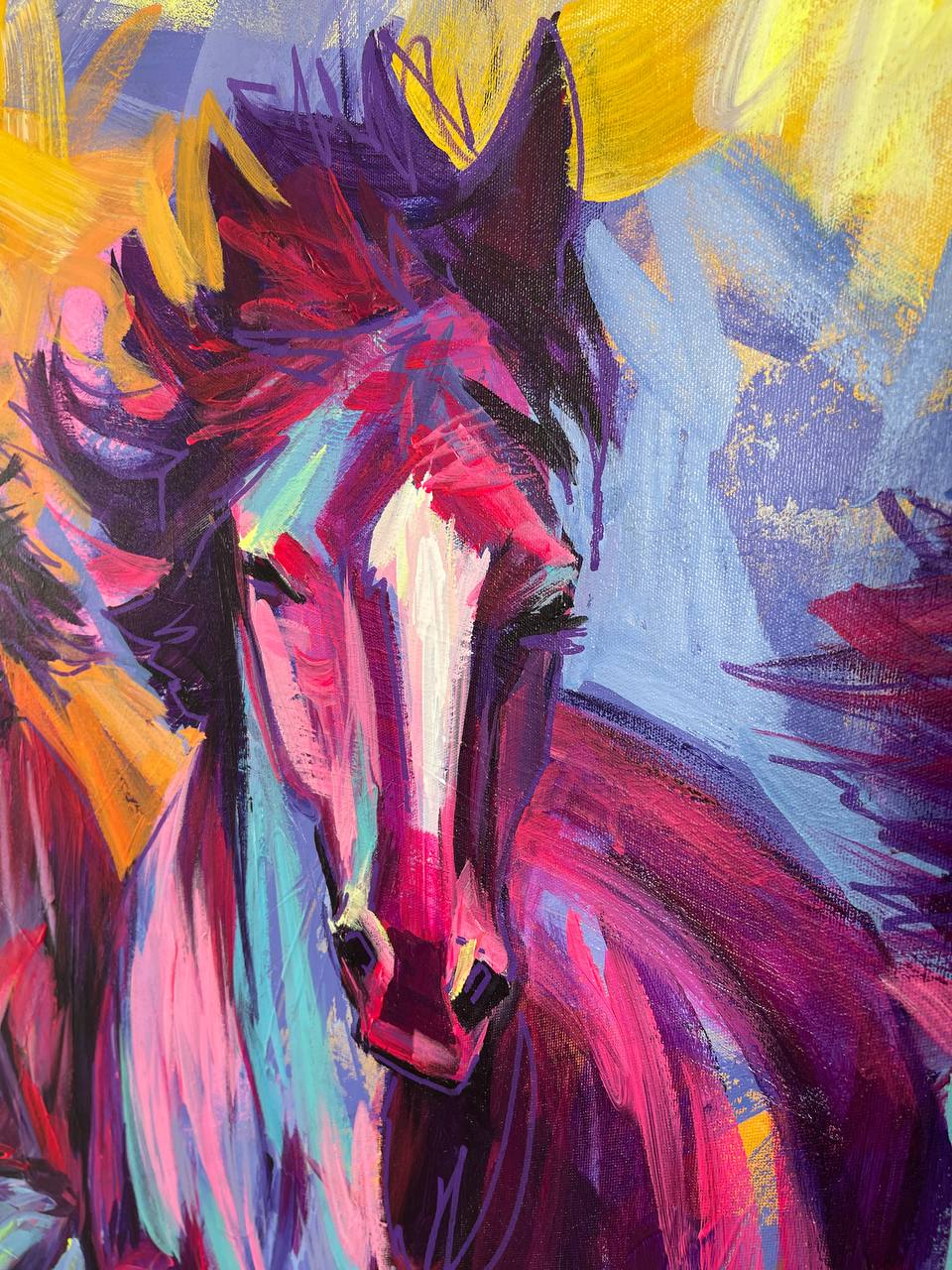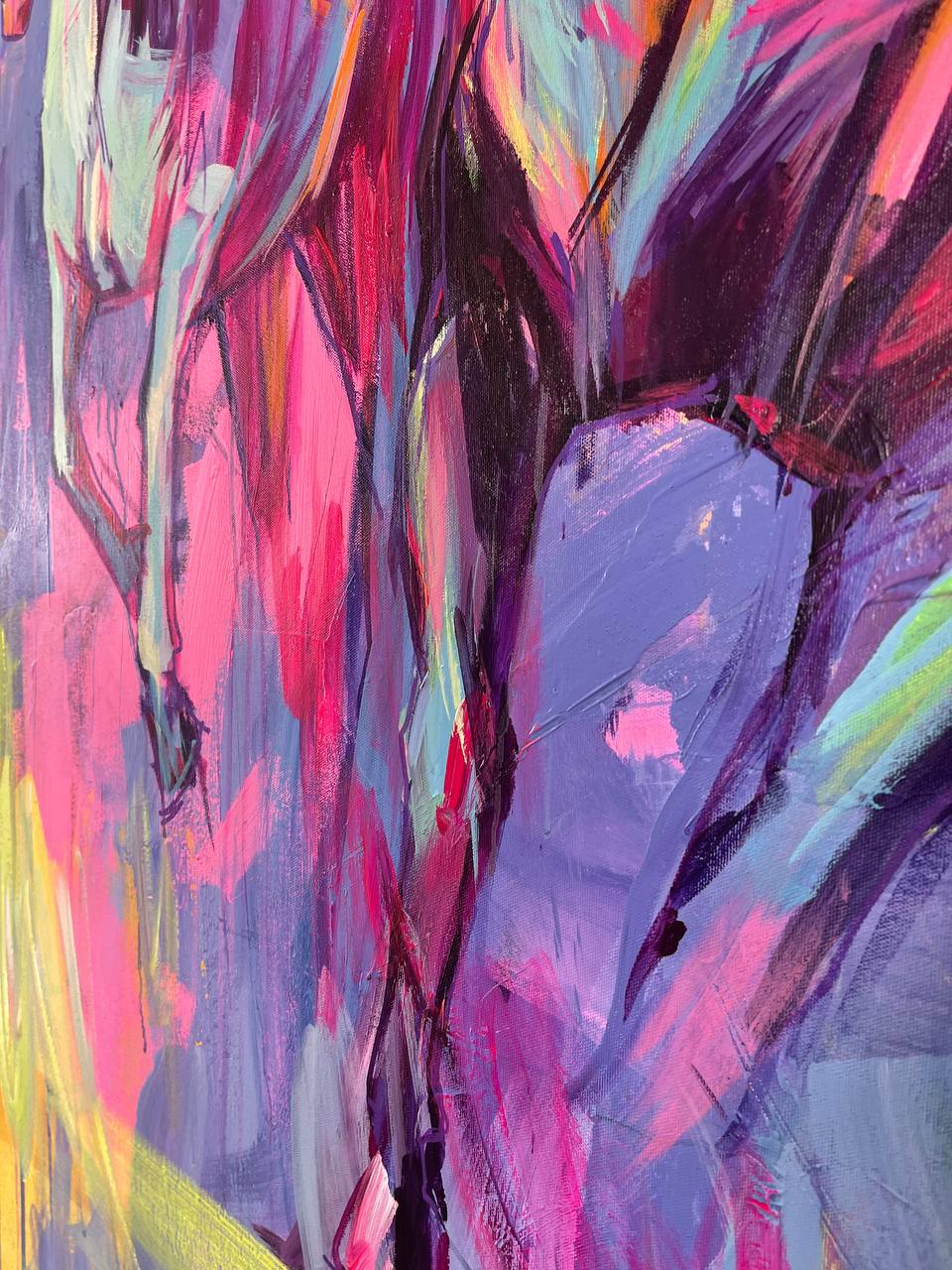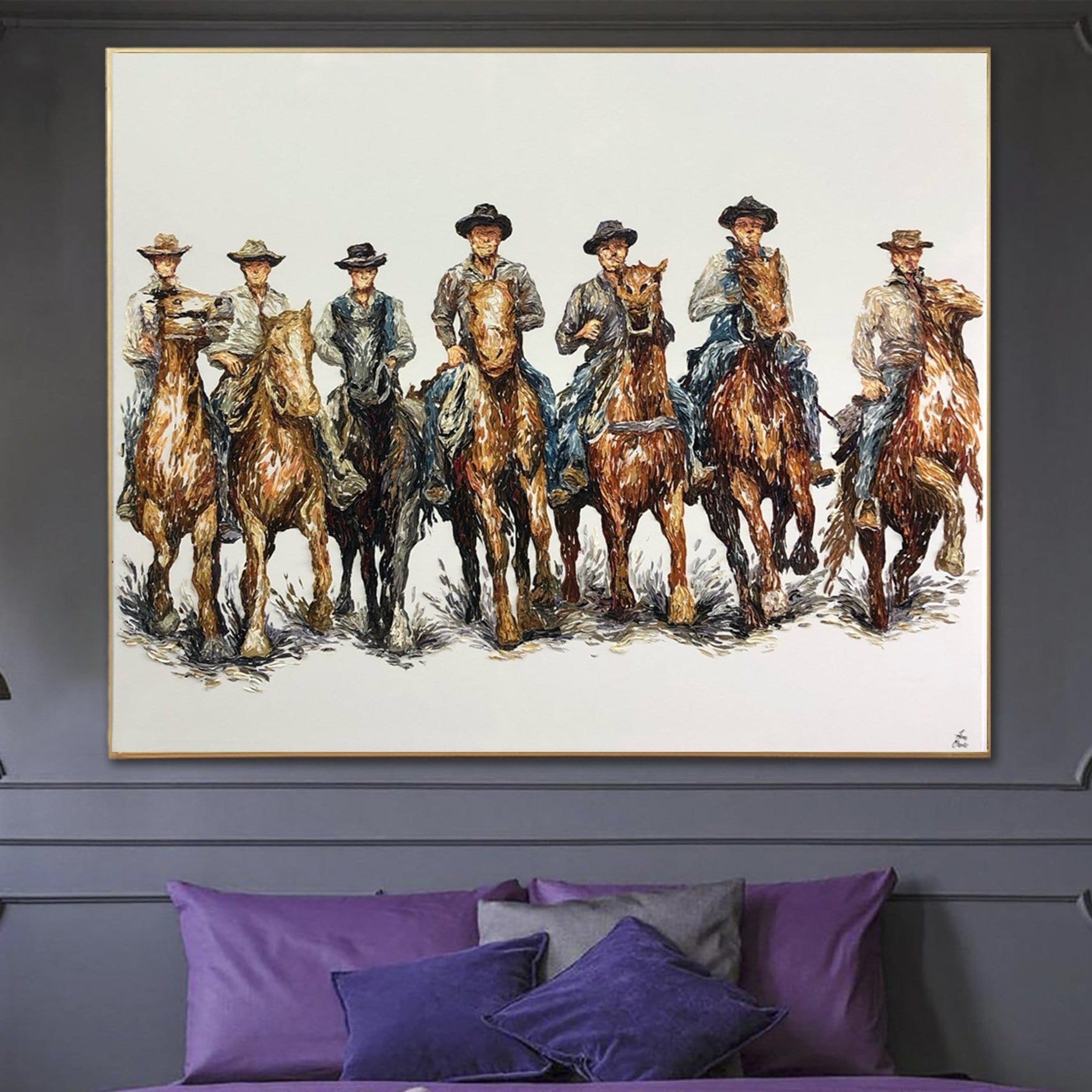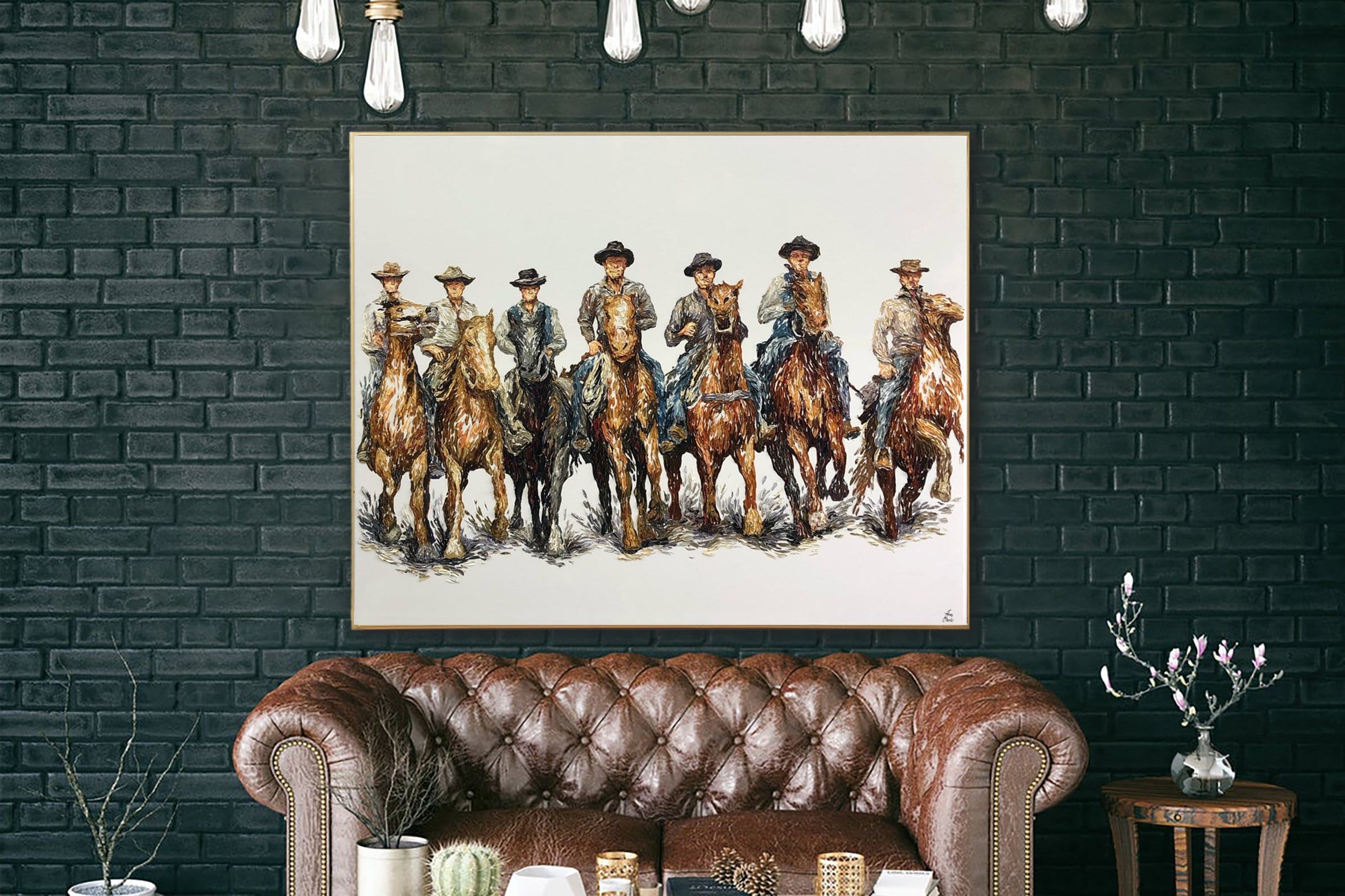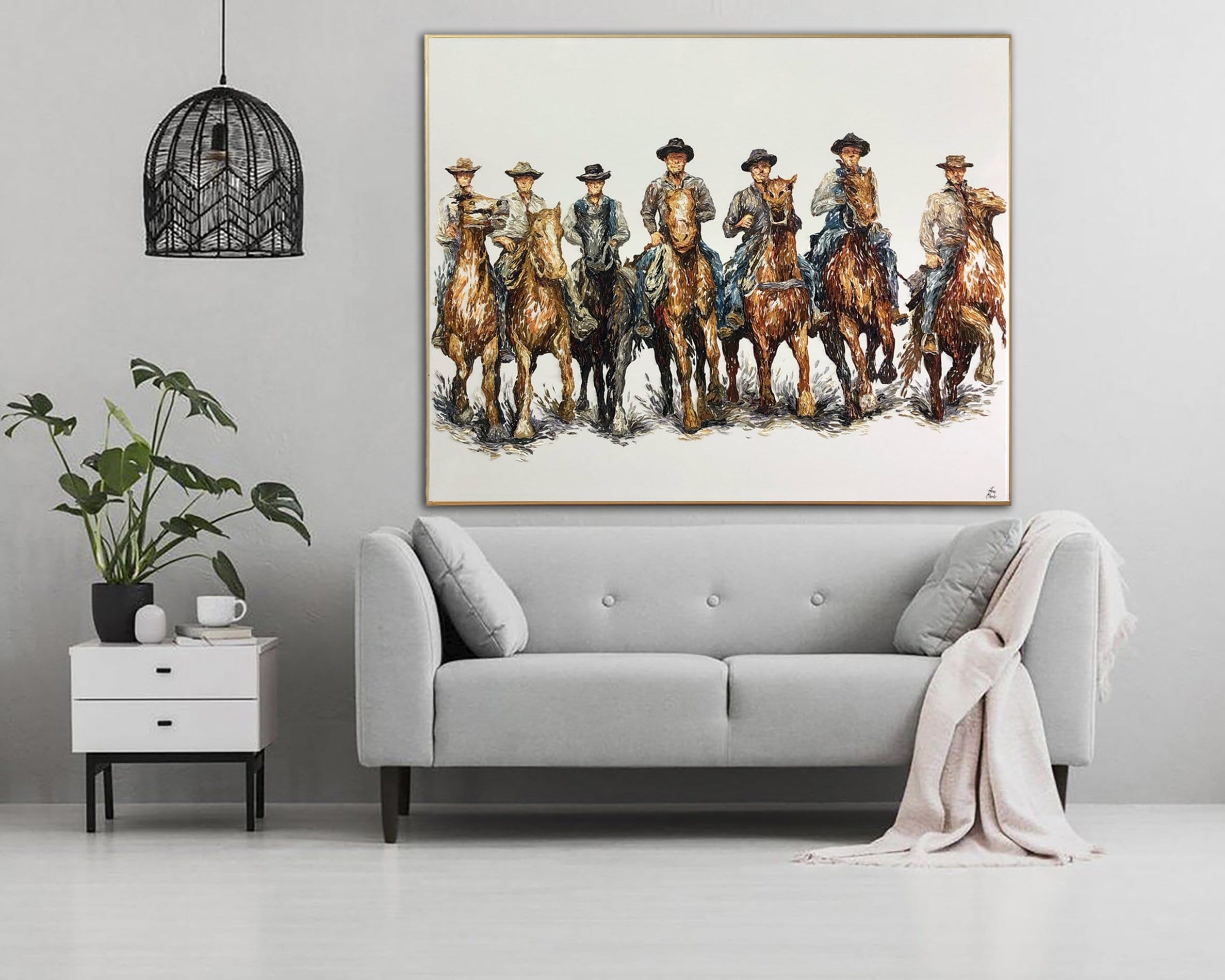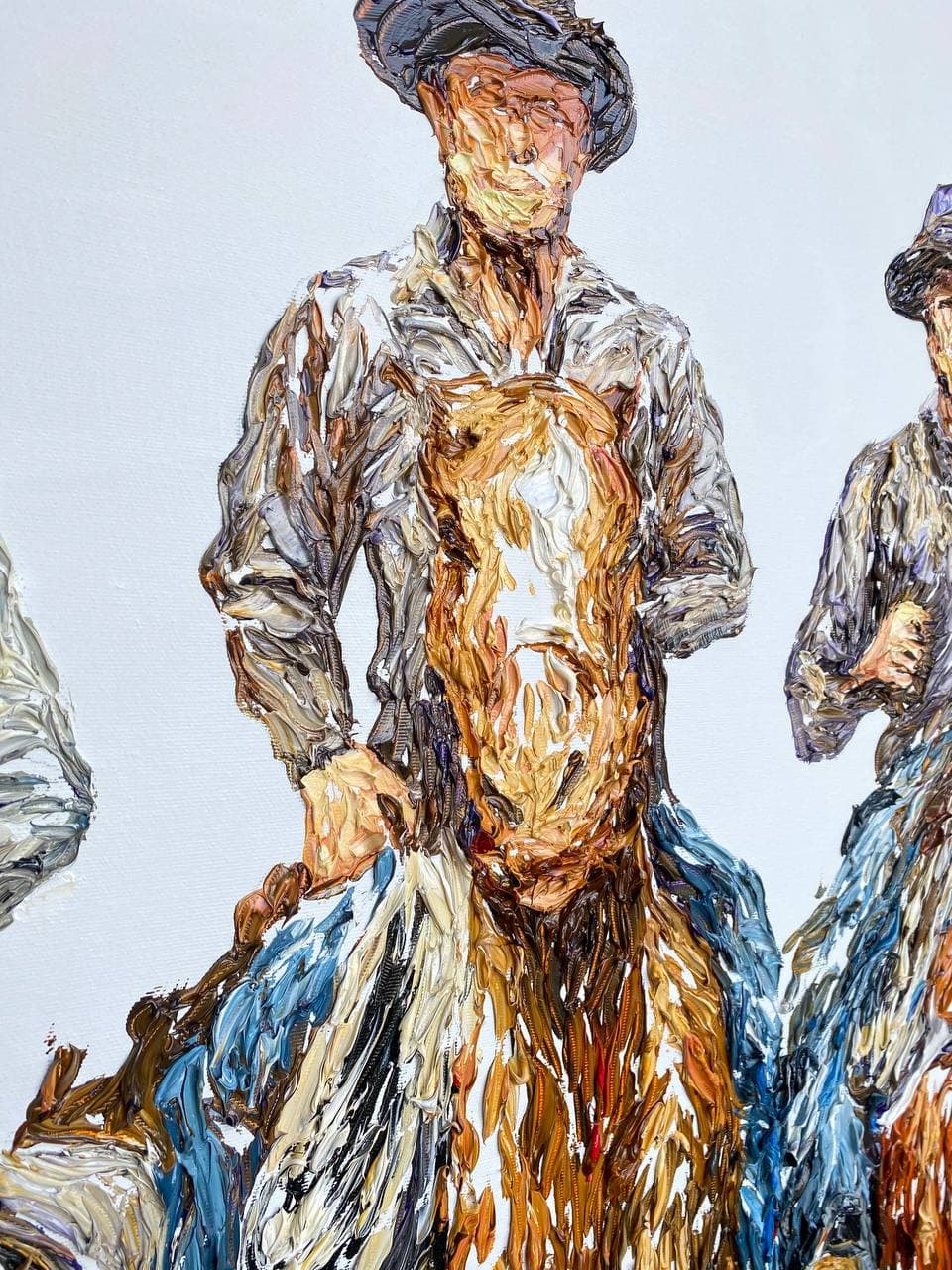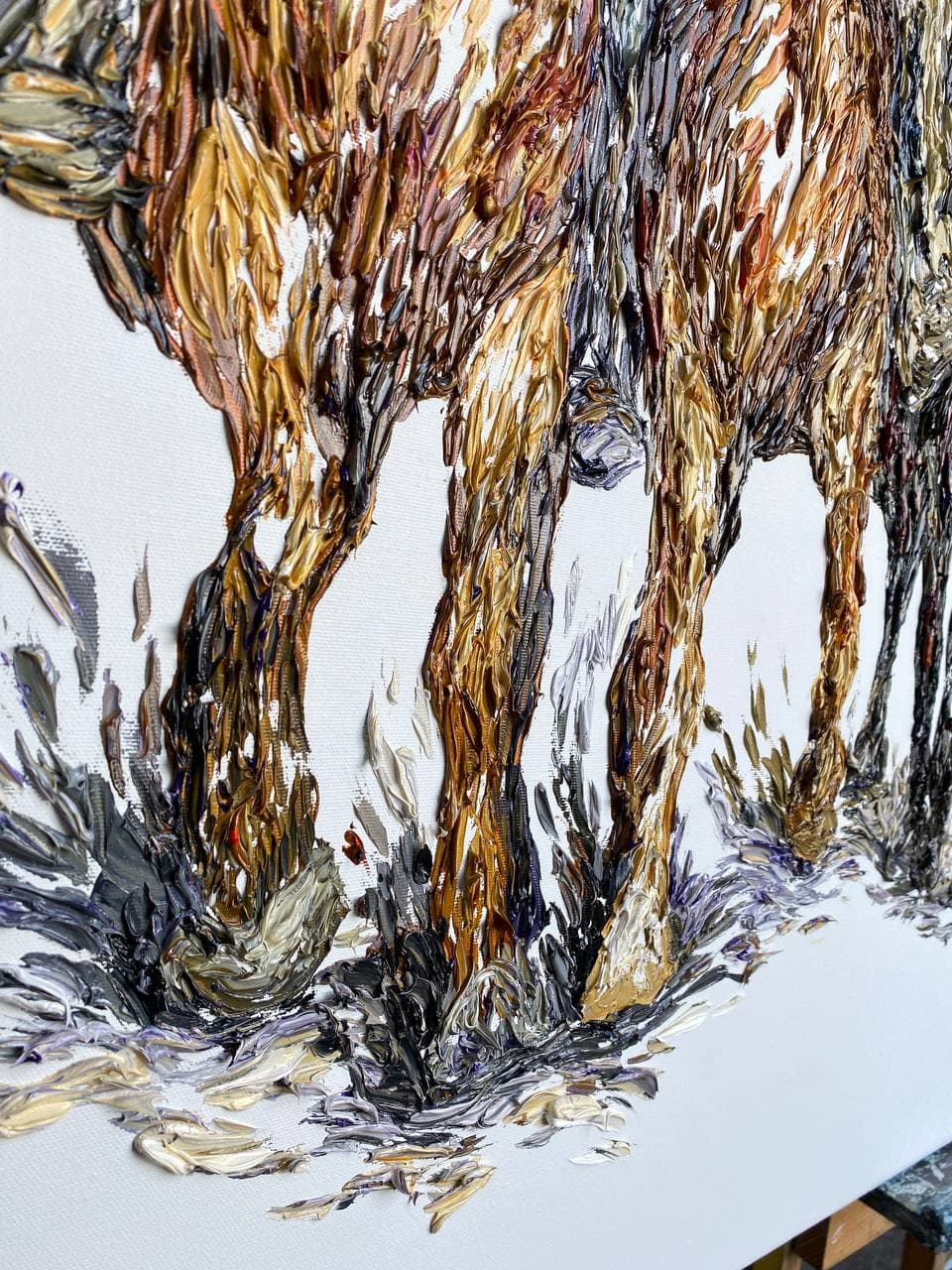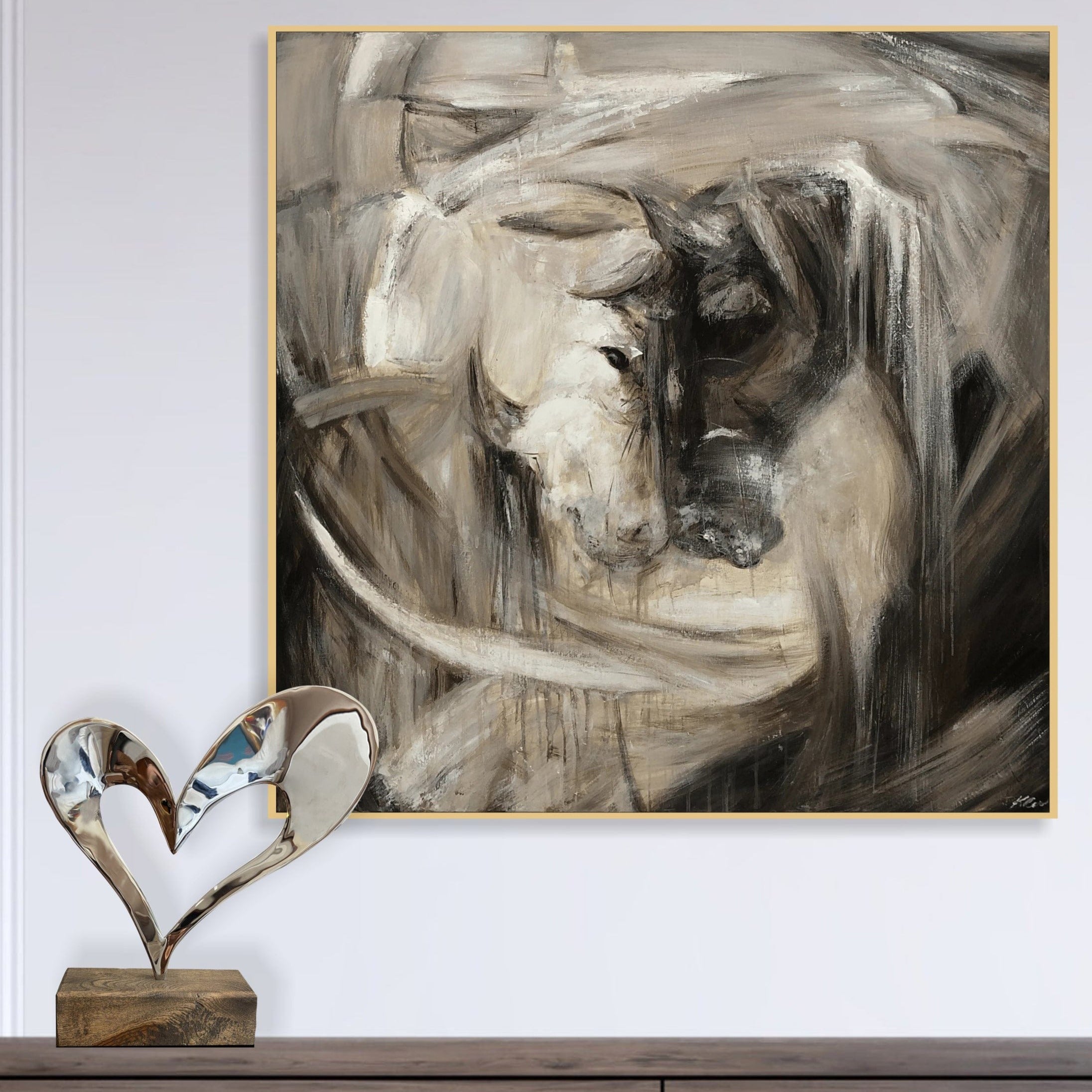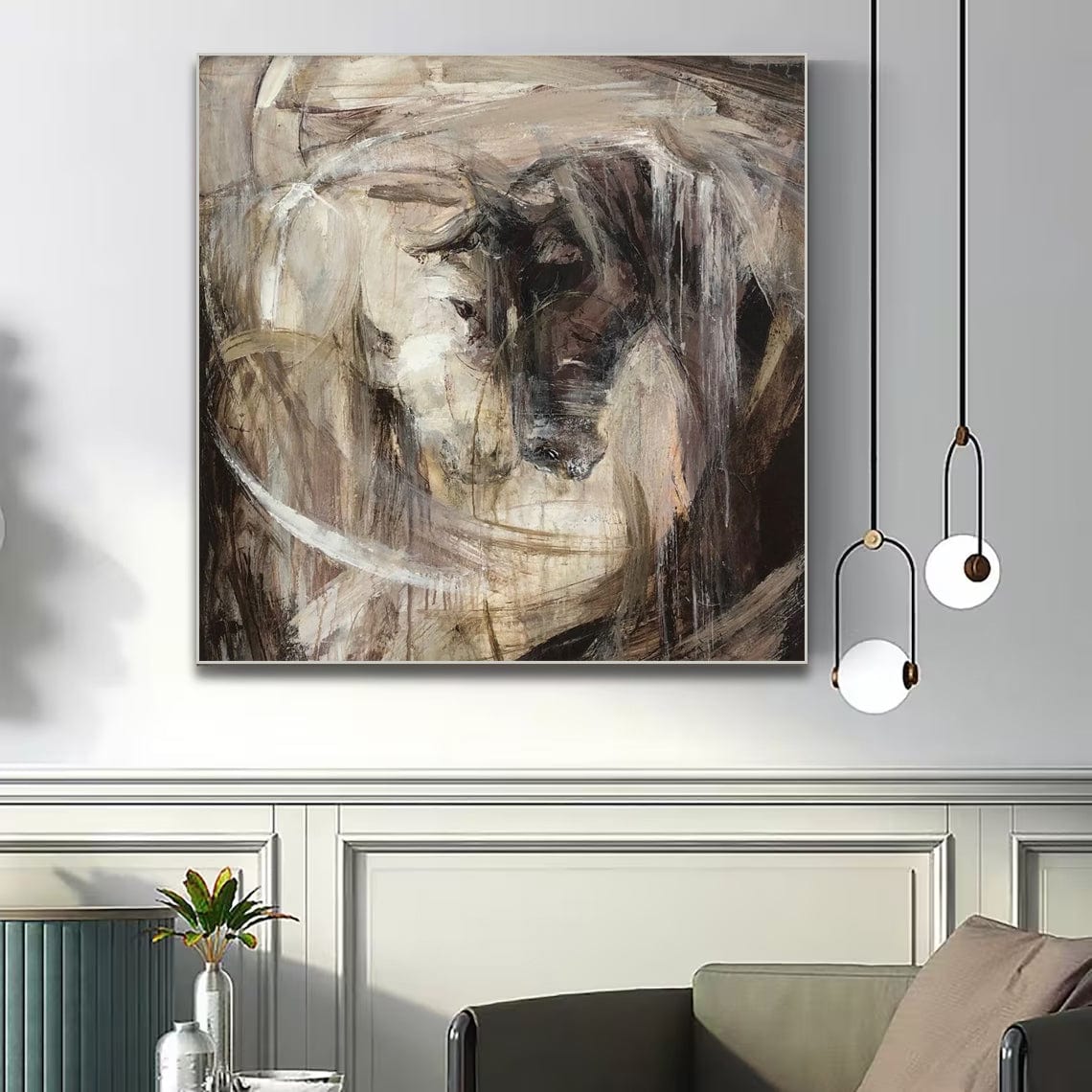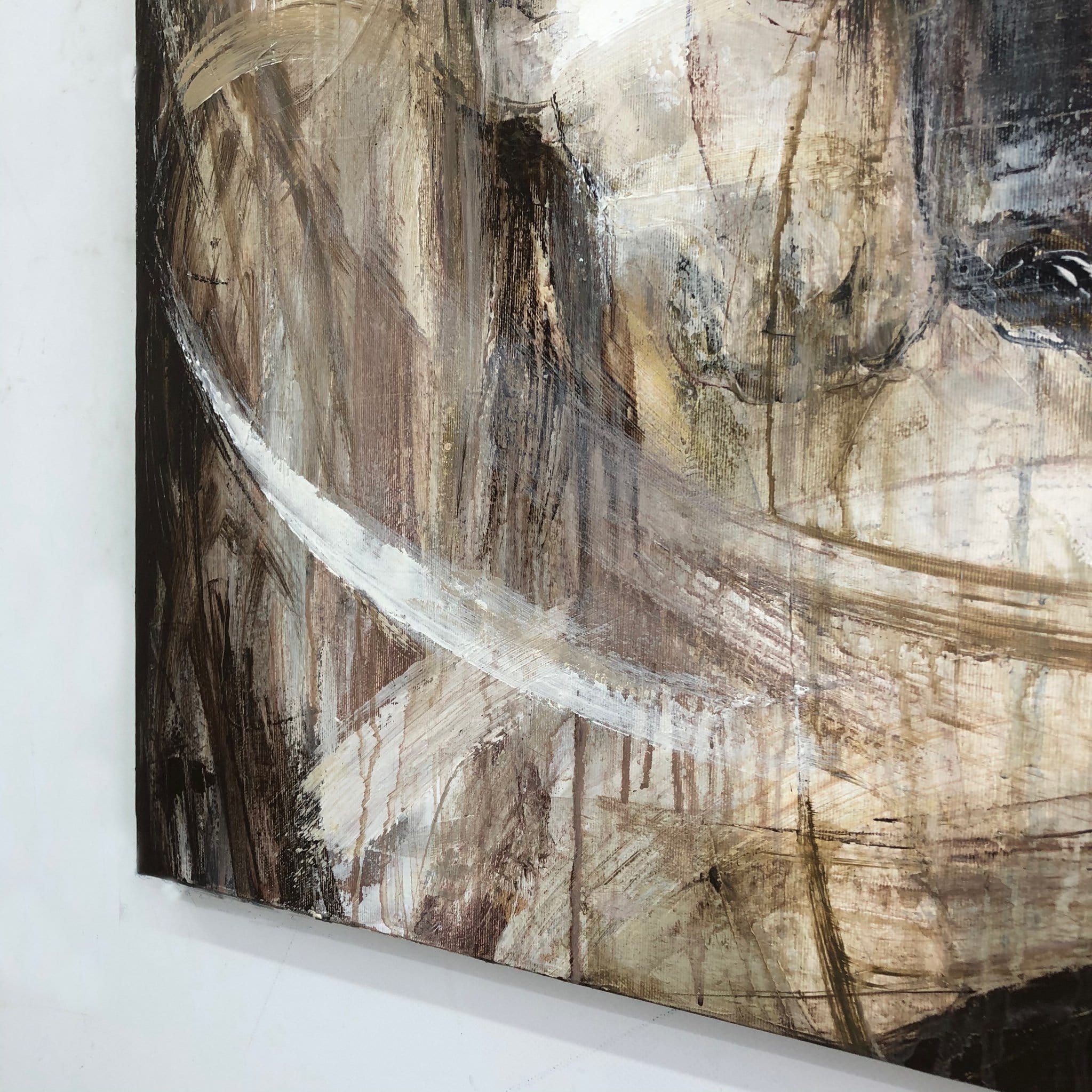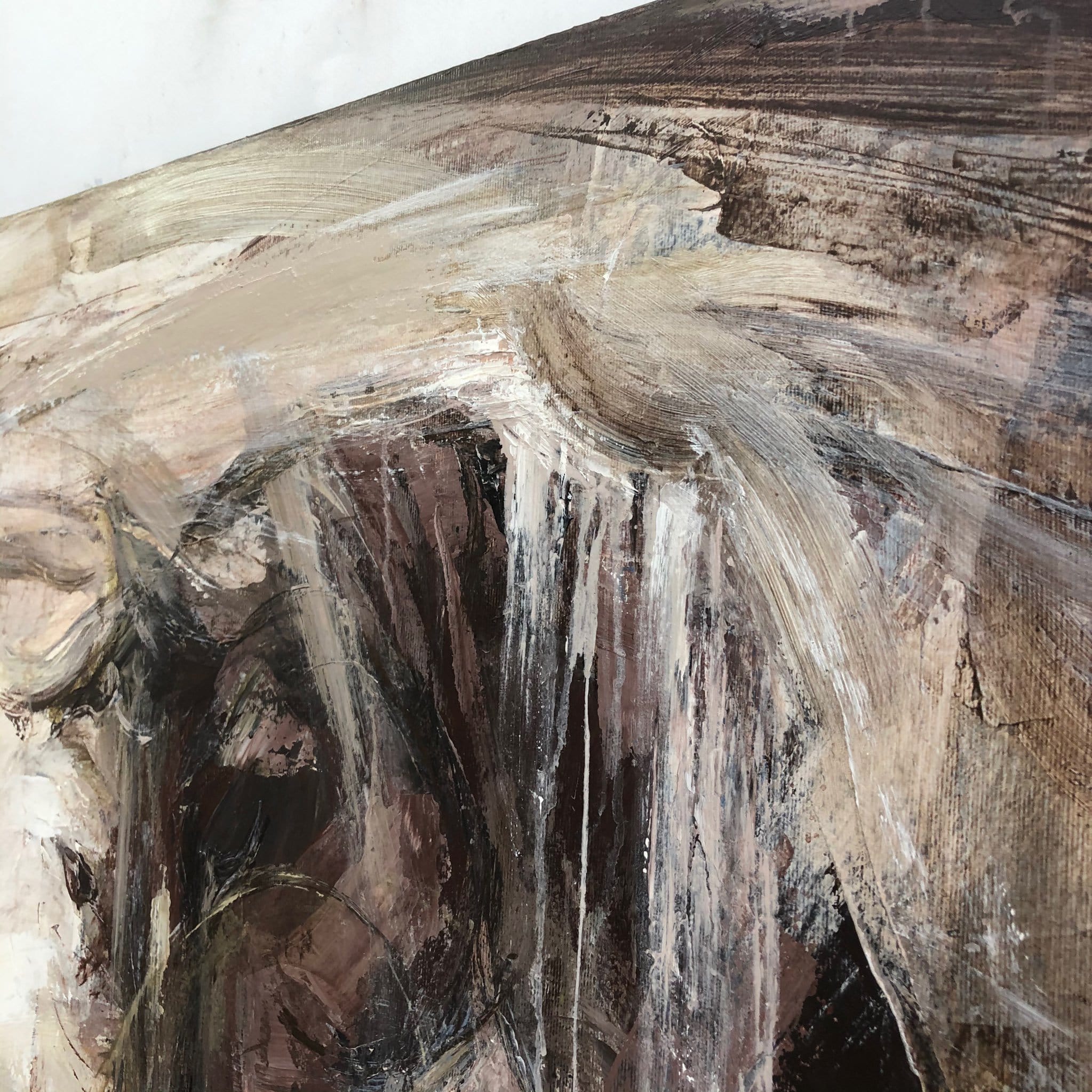Horse paintings continue to be popular in art and home decor because they signify freedom, power, grace, and loyalty, all of which are highly meaningful to many people. This article highlights twelve masterpieces that celebrate these noble creatures, which have been human companions and artistic subjects for centuries.
To modernize this tradition, TrendGallery.art creates custom artworks that blend classical themes with contemporary styles. This platform allows art lovers to enjoy personalized pieces that maintain the essence of traditional equine art while adapting to modern tastes, ensuring the enduring appeal of horse paintings in the art world!
1. Whistlejacket (1762) by George Stubbs: A Masterpiece in Vintage Horse Painting

Whistlejacket (1762) by George Stubbs
George Stubbs, a renowned self-taught English artist, created some of the most striking horse paintings, capturing the spirit, power, and grace of these noble creatures. His famous painting, "Whistlejacket", is an iconic example of vintage horse art and holds significant importance in British art. Commissioned by the Marquis of Rockingham, the large horse painting on canvas features a prancing stallion, portrayed in exquisite detail and full of life, highlighting Stubbs’ exceptional skill in depicting horse anatomy and vitality.
This large-scale masterwork is notable for its composition, which focuses entirely on the gorgeous stallion with no backdrop distractions. The artwork not only depicts Stubbs' passion for racehorses, which drew the British Jockey Club members who frequently commissioned his work, but also demonstrates equine art's enduring appeal, as it still sets auction records centuries later.
2. Blue Horse I (1911) by Franz Marc: An Abstract Horse Painting with Deep Meaning

Blue Horse I (1911) by Franz Marc
Franz Marc, a notable German Expressionist, is celebrated for his abstract and vividly unconventional artworks, including the renowned series featuring blue horses, which captivated and sometimes perplexed his contemporaries. "Blue Horse I" exemplifies Marc's unique approach to equestrian art, using broken lines and a striking color palette to convey deep emotional and spiritual meanings.
In this painting, the horse, depicted in vibrant blue, resonates with the strength and vigor of a young man in his prime, while also symbolizing courage and spirituality, integral themes in Marc's work. The use of yellow hints at femininity, softness, and sensuality, contrasting with red, which Marc employs to express assertiveness and determination. This combination of colors and abstract forms not only imbues the piece with an elusive charm but also paves the way for modern interpretations of equestrian art, allowing viewers to explore a deeper emotional resonance.
3. Napoleon Crossing the Alps (1801) by Jacques-Louis David: A Powerful Man Riding Horse Painting

Napoleon Crossing the Alps (1801) by Jacques-Louis David
The man riding horse painting was inspired by Napoleon's role in organizing one of the most successful mountain campaigns during May 1800 in Northern Italy. This Alpine campaign left a significant mark on European consciousness and was vividly captured by David a year after the events.
Amazingly, this piece of art has five original versions, all of which have survived to this day. David received a hefty payment of 24,000 livres for painting the initial edition, which was ordered by Spanish King Charles IV. The painting was so well-received that Napoleon himself ordered a version. David gifted the third rendition to Les Invalides in Paris, produced the fourth for the government of the Cisalpine Republic, and in 1805, created the fifth and final version for himself, which he cherished until his death. David’s portrayal of Napoleon on horseback, boldly ascending the rugged Alps, became an emblem of heroism and resolute authority.
4. The Boy Leading a Horse (1905-1906) by Pablo Picasso: A Blend of Simplicity and Grandeur

The Boy Leading a Horse (1905-1906) by Pablo Picasso
Pablo Picasso's "rose period" (1904–1906) was characterized by a gentle color scheme predominantly composed of oranges and pinks, and artworks that exuded warmth and optimism. One of the most notable examples of this phase is "The Boy Leading a Horse," which was painted during the winter of 1905–19006. Picasso initially envisioned a grand composition for this painting, where a boy leading a horse by the bridle, would be joined by other riders heading to water and bathe the horses. Interestingly, the painting remains unfinished, as evidenced by the absence of a bridle in the boy’s hand, though his posture suggests he is leading the horse.
Despite its unfinished state, Picasso chose to leave the painting as it was, focusing the viewer's attention on the horse captured in a pose that expresses nobility, beauty, and strength. This work beautifully illustrates Picasso's mastery in blending simplicity with grandeur. Through minimalist lines and subtle coloration, "The Boy Leading a Horse" captures the strength and elegance of the horse, proving Picasso’s ability to convey profound themes with pared-down visual elements.
5. The Horsewoman (1832) by Karl Bryullov: Vintage Elegance and Equestrian Charm

The Horsewoman (1832) by Karl Bryullov
"The Horsewoman" by Karl Bryullov is a stunning illustration of equestrian portraiture from the 19th century that flawlessly portrays the beauty and charm of its era. Bryullov's patroness and muse, Countess Yulia Samoilova, commissioned the portrait to be created in Milan. It shows the Pacini family, an Italian musician, with Giovannina astride a horse and Amazilia looking on in awe.
The painting contrasts the poised and graceful demeanor of Giovannina with the lively and skittish nature of the black thoroughbred horse she rides. This contrast is further accentuated by the rider's light outfit, which highlights her calmness, self-assurance and sophistication. The juxtaposition of the composed rider against the spirited horse evokes admiration and emphasizes the sophistication inherent in 19th-century equestrian portraiture.
6. The White Horse "Gazelle" (1881) by Henri Toulouse-Lautrec: A Black and White Horse Painting with Depth

The White Horse "Gazelle" (1881) by Henri Toulouse-Lautrec
Henri Toulouse-Lautrec, a post-impressionist painter renowned for his vivid portrayal of Parisian life, also explored the serene and intimate world of animals in several of his works. "The White Horse 'Gazelle'" painted in 1881 is an unusual depiction of a white horse, capturing both its weariness and enduring grace.
In this painting, Lautrec employs subtle tones and textures to express the nuanced character of the horse. The animal’s slightly drooping posture and the expressive gaze convey a deep weariness, as if burdened by the trials of life. Yet, despite this fatigue, Lautrec masterfully preserves the horse’s inherent beauty and grace, illustrating how these qualities remain unmarred by hardships. The use of a predominantly black and white palette enhances the depth of the horse’s emotional state, drawing attention to the contrasts between its physical exhaustion and the resilient spirit.





















